

Name: Smart Fresh Pro Year: 2021 Client: Politecnico di Milano Categories: Product Authors: Vasyl Pavlyuchok Supervisor: Innocenzo Rifino
Name: Smart Fresh Pro Year: 2021 Client: Politecnico di Milano Categories: Product Authors: Vasyl Pavlyuchok Supervisor: Innocenzo Rifino
Smart Fresh Pro is a master's degree thesis project developed at the Politecnico di Milano, focusing on an advanced method for preserving fruit and vegetables at home. The goal is to extend their shelf-life while reducing the amount of food that is thrown away at household level, contributing to the solution of the current food waste problem. The project aims to optimize storage conditions and provide practical solutions for consumers to maintain the quality and freshness of their produce.
Overview ——
Overview ——
Smart Fresh Pro is a master's degree thesis project developed at the Politecnico di Milano, focusing on an advanced method for preserving fruit and vegetables at home. The goal is to extend their shelf-life while reducing the amount of food that is thrown away at household level, contributing to the solution of the current food waste problem. The project aims to optimize storage conditions and provide practical solutions for consumers to maintain the quality and freshness of their produce.


Fruits and Vegetables ——
Food is a crucial part of our lives and what we eat has a direct impact on our health. Fruit and vegetables are the most recommended, as they are nutrient-rich and essential for a healthy and balanced diet. When we eat, our body absorbs different macro and micronutrients from the food, and transports them to different parts of the body, which are used for the correct functioning of our organs. In this way, consuming quality food is essential, as it will help to enjoy good health and improve our quality of life.
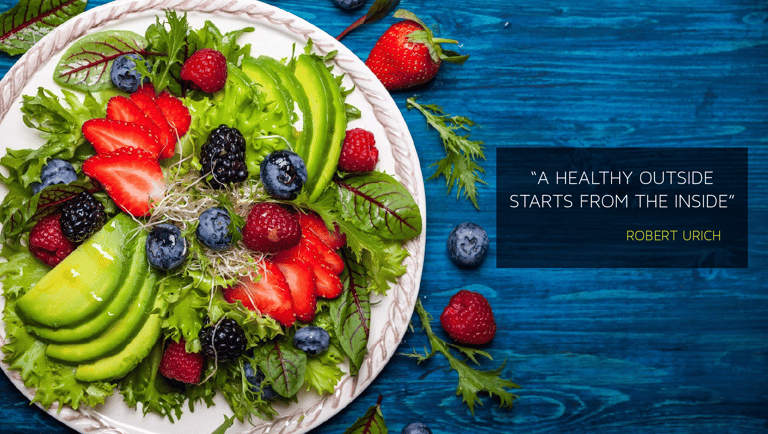

A very common problem in our society is that we often do not pay attention to the calories that different food contain. Processed foods often contain higher calories due to added sugars or fats, making them less nutritious compared to fresh foods like fruits and vegetables. These processed foods may have lower micronutrient content and artificial additives, leading to poorer nutritional quality. To maintain a healthier and a balanced diet, nutritionists promote to include big amounts of fruit and vegetables, due to their high content of macro and micronutrients, such as minerals, vitamins and fibers.

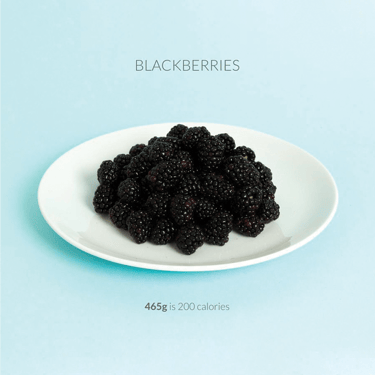
Fruits and Vegetables ——
Food is a crucial part of our lives and what we eat has a direct impact on our health. Fruit and vegetables are the most recommended, as they are nutrient-rich and essential for a healthy and balanced diet. When we eat, our body absorbs different macro and micronutrients from the food, and transports them to different parts of the body, which are used for the correct functioning of our organs. In this way, consuming quality food is essential, as it will help to enjoy good health and improve our quality of life.


A very common problem in our society is that we often do not pay attention to the calories that different food contain. Processed foods often contain higher calories due to added sugars or fats, making them less nutritious compared to fresh foods like fruits and vegetables. These processed foods may have lower micronutrient content and artificial additives, leading to poorer nutritional quality. To maintain a healthier and a balanced diet, nutritionists promote to include big amounts of fruit and vegetables, due to their high content of macro and micronutrients, such as minerals, vitamins and fibers.



Urbanization and its Impacts ——
Urbanization, the shift of human populations to cities, has increased significantly and is expected to reach 68% by 2050 (United Nations Population Division. World Urbanization Prospects: 2014 Revision). Cities have historically been economic hubs and today play a crucial role in national wealth creation and social and economic development. However, they also present significant responsibilities due to their potential for rapid and devastating impacts. Sustainable development of cities depends on successful management of urban growth, particularly in developing countries facing challenges in meeting the needs of their growing urban populations.




Urbanization and its Impacts ——
Urbanization, the shift of human populations to cities, has increased significantly and is expected to reach 68% by 2050 (United Nations Population Division. World Urbanization Prospects: 2014 Revision). Cities have historically been economic hubs and today play a crucial role in national wealth creation and social and economic development. However, they also present significant responsibilities due to their potential for rapid and devastating impacts. Sustainable development of cities depends on successful management of urban growth, particularly in developing countries facing challenges in meeting the needs of their growing urban populations.
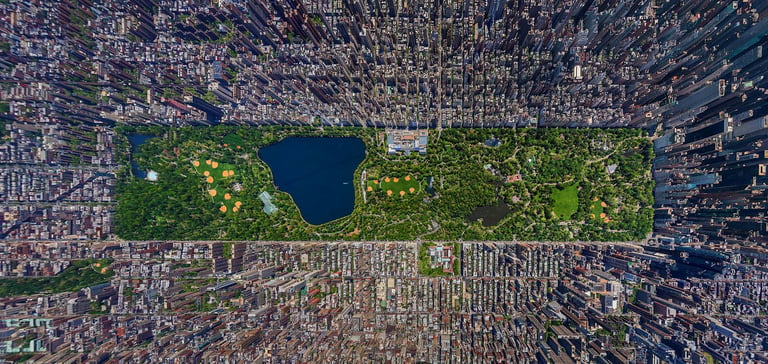



The world population keeps growing and this poses many problems about the future of food. It is estimated that by 2050 the world population will reach 9.8 billion, requiring 70% of extra food.
Population Growth ——
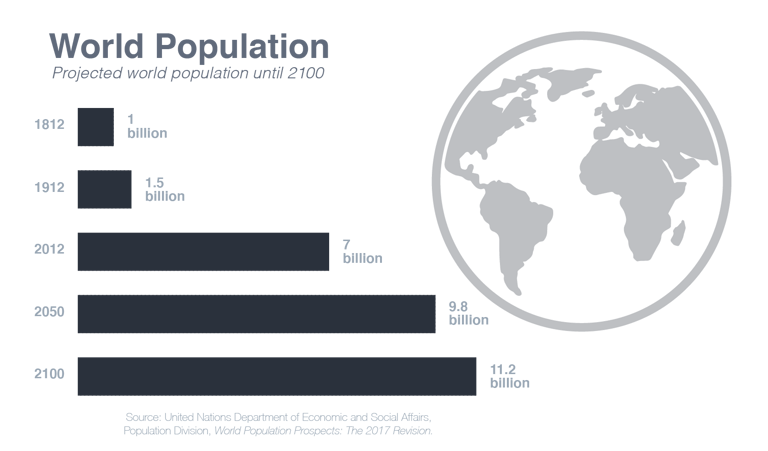

However, this growth poses significant challenges, particularly in terms of food production, which has a substantial impact on the environment. Food production is responsible for a significant portion of greenhouse gas emissions and consumes vast quantities of water, leading to pollution and reduced water reserves. Additionally, agriculture and livestock contribute to the destruction of habitats and the extinction of wildlife. Meeting the food needs of a growing population while reducing the environmental impact of production is a pressing challenge that requires innovative and sustainable solutions (Where will we find enough food for 9 billion people? National Geographic).
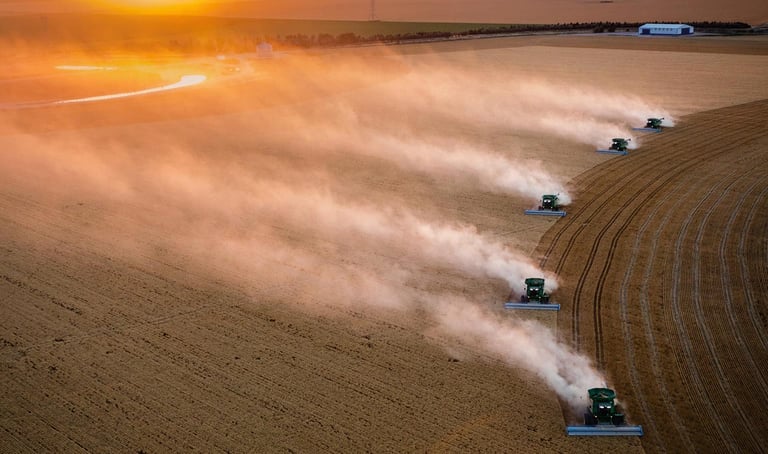

The world population keeps growing and this poses many problems about the future of food. It is estimated that by 2050 the world population will reach 9.8 billion, requiring 70% of extra food.
Population Growth ——


However, this growth poses significant challenges, particularly in terms of food production, which has a substantial impact on the environment. Food production is responsible for a significant portion of greenhouse gas emissions and consumes vast quantities of water, leading to pollution and reduced water reserves. Additionally, agriculture and livestock contribute to the destruction of habitats and the extinction of wildlife. Meeting the food needs of a growing population while reducing the environmental impact of production is a pressing challenge that requires innovative and sustainable solutions (Where will we find enough food for 9 billion people? National Geographic).


Food Consumption ——
Social development has brought many advantages to our life and has also changed the way we live. The purchase and consumption of food in our society, depend on a set of demographic, economic and cultural factors. Thus, the availability of time for the preparation of food, the size of the family, the location of the house with respect to the work and purchasing power, are just some of the main factors that influence our lifestyle and purchasing habits, as well as the food eat.
Over the last decades, our diets have been changing, and we are continually moving towards the healthier and nutritionally rich consumption. Despite the price of fruit and vegetables have increased their value in last years (Rapporto Coop 2018), the consumption of fresh food continues to grow, and the predictions ensure that this trend will continue in the coming years.
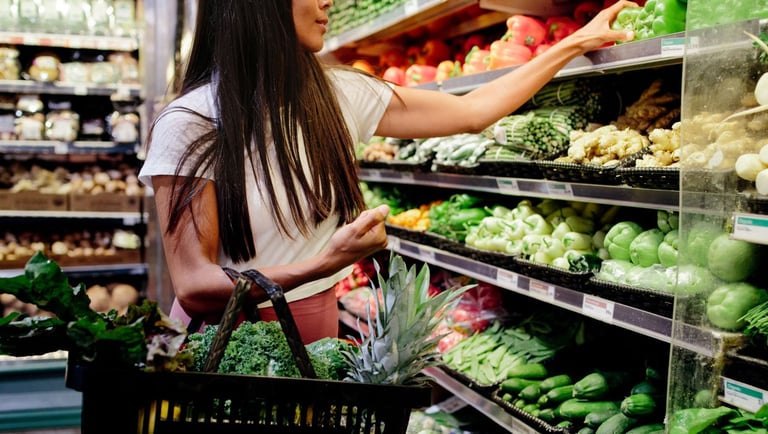

Among the European countries, Spain and Italy are the ones that spend the most on food, since around 20% of their expenses are destined to this area. Analyzing the situation of food in Italy, and according to Istat and COOP Report 2018, last year the country spent 21% on food and beverages with respect to the total household expenditure (Spese per consumi delle famiglie. Istat, 2018).
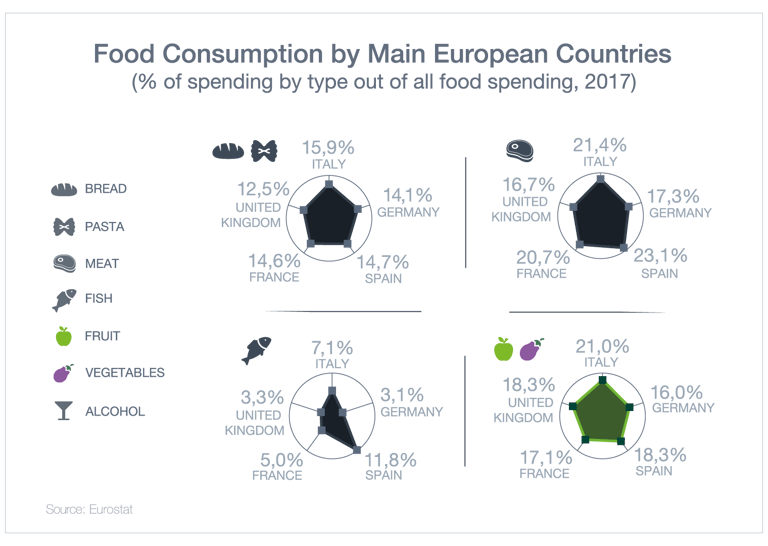

Food Consumption ——
Social development has brought many advantages to our life and has also changed the way we live. The purchase and consumption of food in our society, depend on a set of demographic, economic and cultural factors. Thus, the availability of time for the preparation of food, the size of the family, the location of the house with respect to the work and purchasing power, are just some of the main factors that influence our lifestyle and purchasing habits, as well as the food eat.
Over the last decades, our diets have been changing, and we are continually moving towards the healthier and nutritionally rich consumption. Despite the price of fruit and vegetables have increased their value in last years (Rapporto Coop 2018), the consumption of fresh food continues to grow, and the predictions ensure that this trend will continue in the coming years.


Among the European countries, Spain and Italy are the ones that spend the most on food, since around 20% of their expenses are destined to this area. Analyzing the situation of food in Italy, and according to Istat and COOP Report 2018, last year the country spent 21% on food and beverages with respect to the total household expenditure (Spese per consumi delle famiglie. Istat, 2018).


One of the biggest problems of the modern society is the food waste.
Food Waste ——
Approximately one-third of food produced for human consumption, or 1.3 billion tonnes annually, is lost or wasted globally, according to the Food and Agriculture Organization of the United Nations. Food loss occurs at various stages of the food supply chain, from agricultural production to market, due to inadequate infrastructure, markets, or legal frameworks. Food waste refers to discarded or non-food use of safe and nutritious food intended for human consumption.

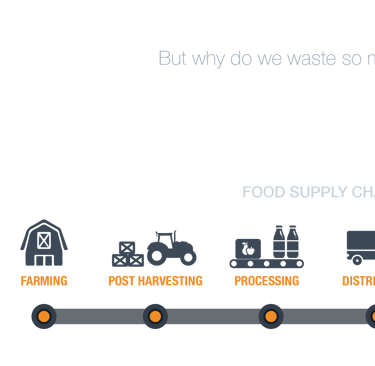
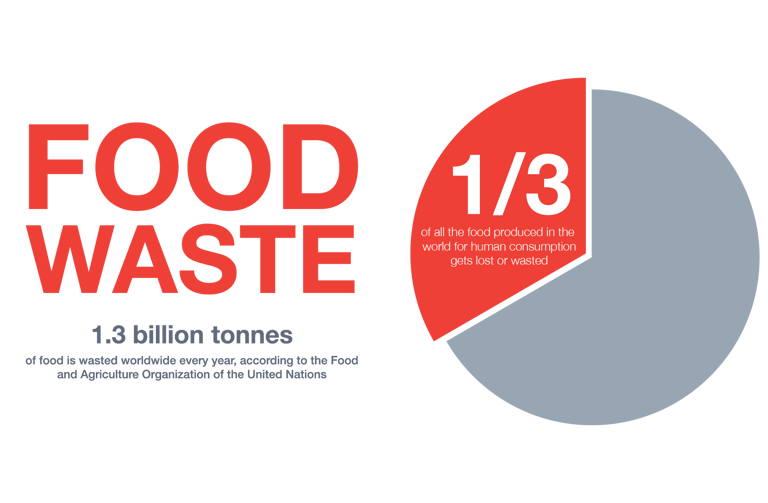

Food waste has increased by 50% since 1974, with perishable foods like fruit, vegetables, roots, and tubers being the most wasted, accounting for 45% of global food losses and waste annually. Food loss and waste occur throughout the food supply chain, from agricultural production to consumption, and can be caused by both controllable and uncontrollable factors. Agricultural production may experience losses due to weather or pests, while post-harvest handling and storage can lead to losses due to spillage and degradation. Processing can result in losses due to spillage and degradation during industrial or domestic processing, and distribution can lead to losses due to limits in distribution systems, inventory management, and marketing and sales standards. Consumption at the household level is the final stage and can result in waste due to incorrect management of personal purchases, excessive food preparation, lack of attention to expiration dates, and incorrect food storage.
Food Loss vs. Food Waste
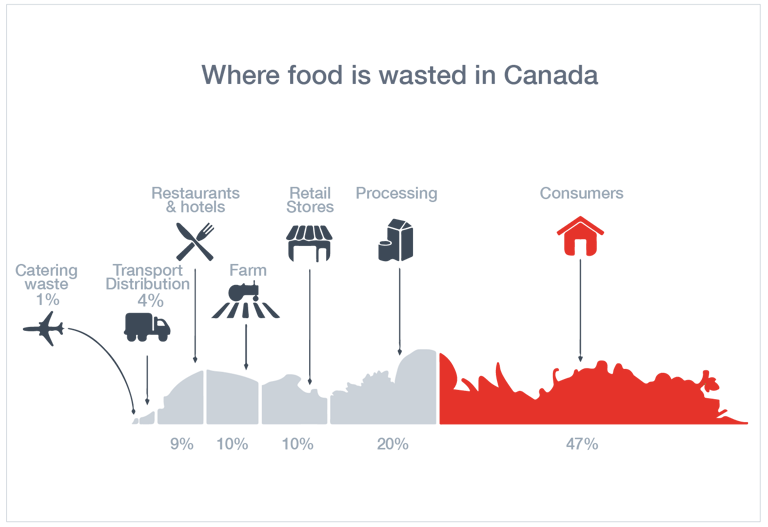

This waste is produced throughout different stages of the Food Supply Chain. However, while developing countries waste more during farming and growing, in developed countries, we waste more during consumption. The biggest part of this waste during consumption falls on fruit and vegetables.
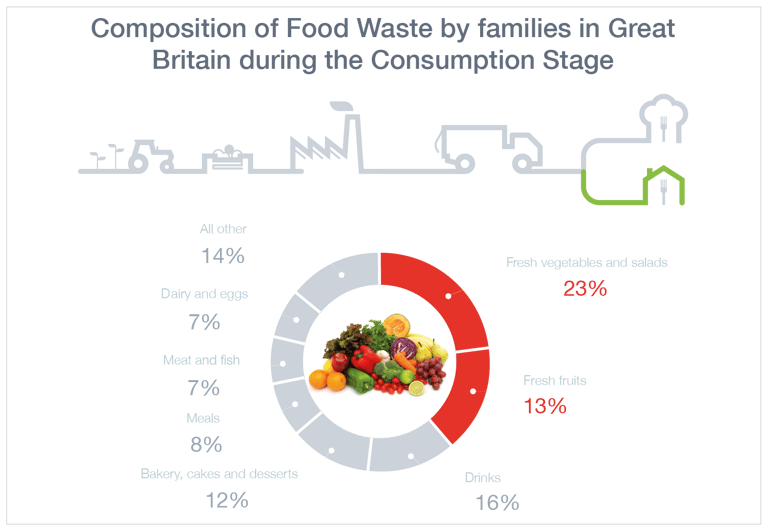

But why do we waste so much at home?




One of the biggest problems of the modern society is the food waste.
Food Waste ——
Approximately one-third of food produced for human consumption, or 1.3 billion tonnes annually, is lost or wasted globally, according to the Food and Agriculture Organization of the United Nations. Food loss occurs at various stages of the food supply chain, from agricultural production to market, due to inadequate infrastructure, markets, or legal frameworks. Food waste refers to discarded or non-food use of safe and nutritious food intended for human consumption.







Food waste has increased by 50% since 1974, with perishable foods like fruit, vegetables, roots, and tubers being the most wasted, accounting for 45% of global food losses and waste annually. Food loss and waste occur throughout the food supply chain, from agricultural production to consumption, and can be caused by both controllable and uncontrollable factors. Agricultural production may experience losses due to weather or pests, while post-harvest handling and storage can lead to losses due to spillage and degradation. Processing can result in losses due to spillage and degradation during industrial or domestic processing, and distribution can lead to losses due to limits in distribution systems, inventory management, and marketing and sales standards. Consumption at the household level is the final stage and can result in waste due to incorrect management of personal purchases, excessive food preparation, lack of attention to expiration dates, and incorrect food storage.
Food Loss vs. Food Waste



This waste is produced throughout different stages of the Food Supply Chain. However, while developing countries waste more during farming and growing, in developed countries, we waste more during consumption. The biggest part of this waste during consumption falls on fruit and vegetables.



But why do we waste so much at home?




Fruit and vegetables are “living organisms” which means that their physiological processes keep going even after they were collected.
Processes in Fruit and Vegetables ——

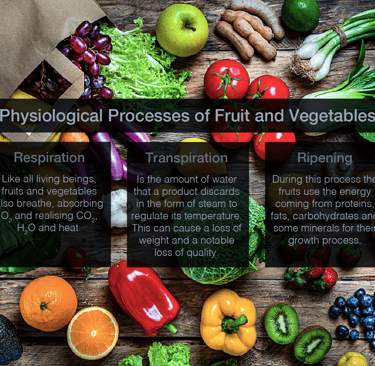
This means that different types of fruit and vegetables require specific storage conditions for their proper preservation.
Fruit and vegetables are “living organisms” which means that their physiological processes keep going even after they were collected.
Processes in Fruit and Vegetables ——


This means that different types of fruit and vegetables require specific storage conditions for their proper preservation.
Fruit and Vegetables Storage Classification ——
Over two decades ago, in 1999, researchers such as Thompson were already suggesting methods to properly preserve fruit and vegetables, considering factors like temperature, relative humidity, and atmospheric composition. Their research aimed to provide guidelines for optimizing storage conditions to extend shelf-life and uphold the quality of various types of produce, grouping these products into 3 main groups, according to the recommended storage conditions. These recommendations from past studies continue to inform effective storage practices for minimizing postharvest losses and ensuring the freshness of fruits and vegetables in the market.
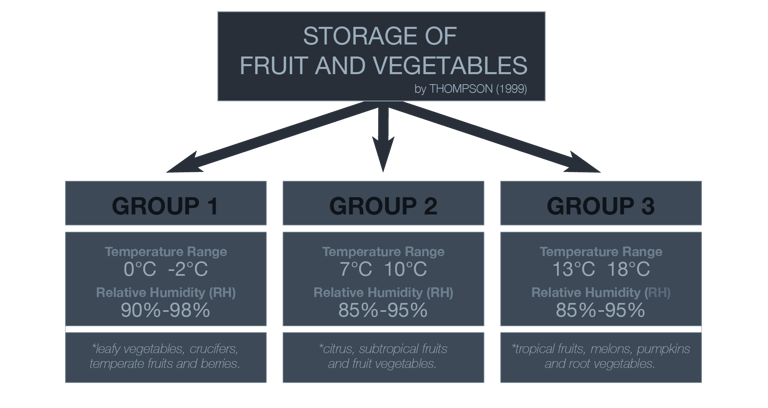

Fruit and Vegetables Storage Classification ——
Over two decades ago, in 1999, researchers such as Thompson were already suggesting methods to properly preserve fruit and vegetables, considering factors like temperature, relative humidity, and atmospheric composition. Their research aimed to provide guidelines for optimizing storage conditions to extend shelf-life and uphold the quality of various types of produce, grouping these products into 3 main groups, according to the recommended storage conditions. These recommendations from past studies continue to inform effective storage practices for minimizing postharvest losses and ensuring the freshness of fruits and vegetables in the market.


Today, the preservation of fresh produce throughout the different stages of Food Supply Chain (FSC) is based on Cold Chain.
Preservation of Fresh Produce by FOOD SUPPLY CHAIN ——
Cold chain storage is the most efficient and cost-effective method for preserving fresh fruits and vegetables throughout the food supply chain. It is characterized by controlling the temperature, humidity, and ventilation to maintain the produce quality (nutrients and organoleptic properties) and extending their shelf-life.
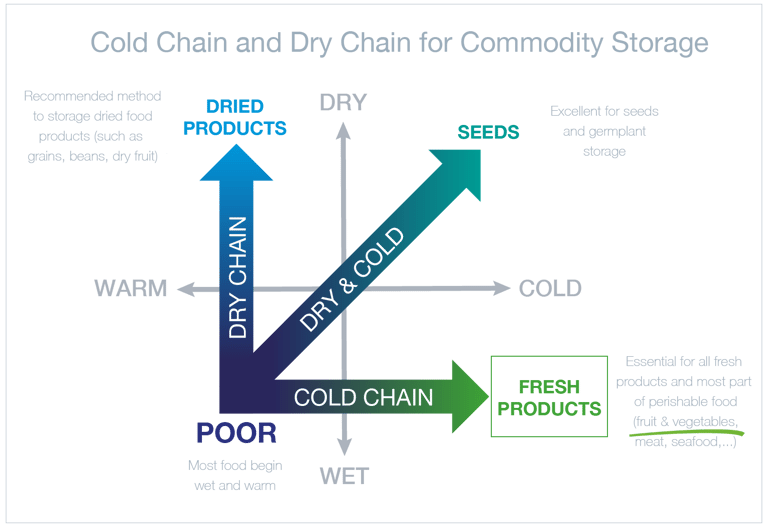

Although less commonly used, there are also some antibacterial methods and treatments used by Food Supply Chain, able to reduce microbial load through the production chain. Let's take a look.
Low temperature reduces the physiological processes of the produce, reducing their respiration rates, ripening processes, and microbial growth. Different types of produce require specific temperature ranges for optimal preservation, with excessive cold leading to freezing injuries or chilling damage.
Temperature Management

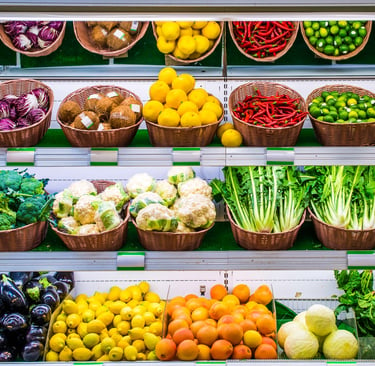
Fresh produce contains high water content. Maintaining appropriate relative humidity levels is essential for reducing water-loss (transpiration) in fruits and vegetables, preserving their weight, appearance, and nutritional quality. High humidity coupled with low temperatures is recommended to minimize transpiration rates and extend the shelf-life of produce.
Relative Humidity Management
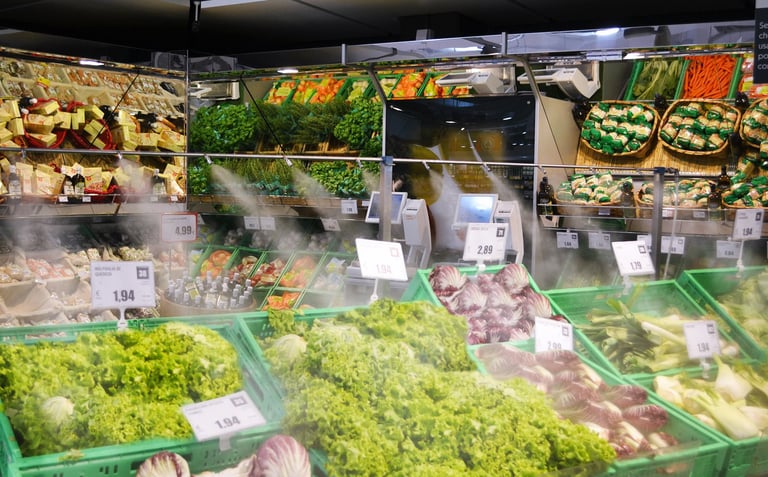

Atmospheric composition management is used for the preservation of fruit and vegetables through modified atmosphere packaging (MAP) and sub-atmospheric pressure storage. MAP involves altering the gas composition inside the storage room or packaging, such as reducing oxygen and increasing carbon dioxide concentrations, to slow down respiration rates and extend shelf life. Sub-atmospheric pressure storage, on the other hand, involves storing produce under reduced pressure, which can help maintain freshness and reduce weight loss. These methods need to be carefully monitored and controlled to avoid any negative effects on produce quality.
Atmospheric Composition Management

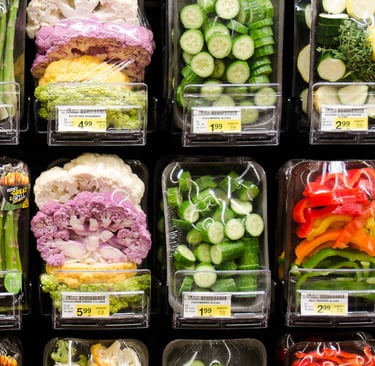
Climacteric fruits emit ethylene gas even after being collected. Ethylene, is a plant hormone released by certain fruits and vegetables, that influences ripening processes and can shorten the storage life of produce. Sensitivity to ethylene varies among different types of produce, with high concentrations accelerating ripening and deterioration.
Ethylene Management

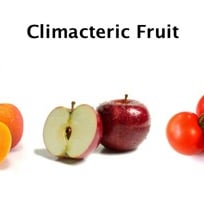

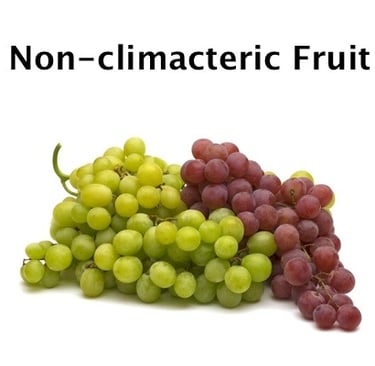
Humid environments promote bacteria growth, that can negatively impact on fresh produce. Reducing bacteria activity will help to extend their shelf-life.
Different eco-friendly methods like antimicrobial washing solutions, biological-based methods, and physical-based treatments are employed to achieve this goal. These methods include the use of chemical solutions like peroxyacetic acid and ozone, biological agents such as bacteriocins and bacteriophages, and physical processes like UV radiation, all aimed at effectively reducing pathogens and ensuring food safety.
Bacteria Management
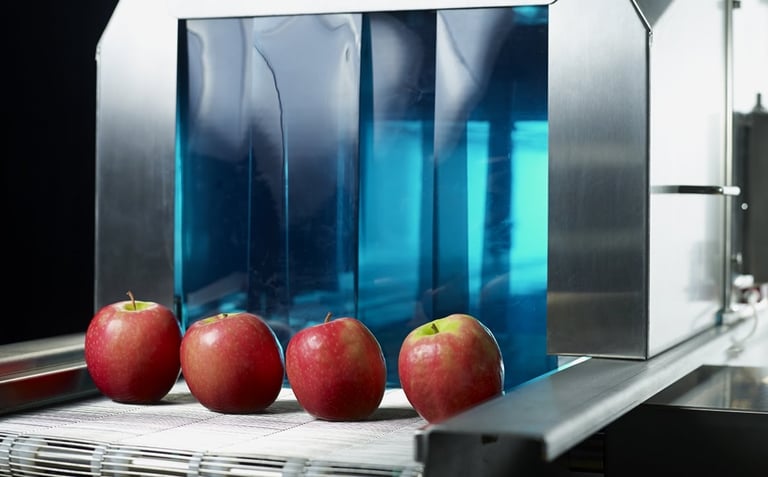

Then, how do we storage fruit and vegetables at home?





Today, the preservation of fresh produce throughout the different stages of Food Supply Chain (FSC) is based on Cold Chain.
Preservation of Fresh Produce by FOOD SUPPLY CHAIN ——
Cold chain storage is the most efficient and cost-effective method for preserving fresh fruits and vegetables throughout the food supply chain. It is characterized by controlling the temperature, humidity, and ventilation to maintain the produce quality (nutrients and organoleptic properties) and extending their shelf-life.


Although less commonly used, there are also some antibacterial methods and treatments used by Food Supply Chain, able to reduce microbial load through the production chain. Let's take a look.
Low temperature reduces the physiological processes of the produce, reducing their respiration rates, ripening processes, and microbial growth. Different types of produce require specific temperature ranges for optimal preservation, with excessive cold leading to freezing injuries or chilling damage.
Temperature Management


Fresh produce contains high water content. Maintaining appropriate relative humidity levels is essential for reducing water-loss (transpiration) in fruits and vegetables, preserving their weight, appearance, and nutritional quality. High humidity coupled with low temperatures is recommended to minimize transpiration rates and extend the shelf-life of produce.
Relative Humidity Management


Atmospheric composition management is used for the preservation of fruit and vegetables through modified atmosphere packaging (MAP) and sub-atmospheric pressure storage. MAP involves altering the gas composition inside the storage room or packaging, such as reducing oxygen and increasing carbon dioxide concentrations, to slow down respiration rates and extend shelf life. Sub-atmospheric pressure storage, on the other hand, involves storing produce under reduced pressure, which can help maintain freshness and reduce weight loss. These methods need to be carefully monitored and controlled to avoid any negative effects on produce quality.
Atmospheric Composition Management


Climacteric fruits emit ethylene gas even after being collected. Ethylene, is a plant hormone released by certain fruits and vegetables, that influences ripening processes and can shorten the storage life of produce. Sensitivity to ethylene varies among different types of produce, with high concentrations accelerating ripening and deterioration.
Ethylene Management




Humid environments promote bacteria growth, that can negatively impact on fresh produce. Reducing bacteria activity will help to extend their shelf-life.
Different eco-friendly methods like antimicrobial washing solutions, biological-based methods, and physical-based treatments are employed to achieve this goal. These methods include the use of chemical solutions like peroxyacetic acid and ozone, biological agents such as bacteriocins and bacteriophages, and physical processes like UV radiation, all aimed at effectively reducing pathogens and ensuring food safety.
Bacteria Management


Then, how do we storage fruit and vegetables at home?



At home, fruit and vegetables are usually kept inside the refrigerator’s crisper drawers.
The Problem with Home Preservation: Analyzing the Modern Refrigerator ——
These compartments have been specifically designed to keep fruits and vegetables fresh for longer. However, a detailed analysis reveals that current refrigerator technology falls short of providing the optimal conditions recommended by food science, leading to premature spoilage and significant food waste.
Benchmark Study


Analyzing modern Samsung, Bosch, Siemens and Hisense Refrigerators
A critical flaw in all refrigerators on the market is their reliance on a single temperature setting (typically 0°C - 5°C) for preserving all fresh produce. This "one-size-fits-all" approach directly contradicts the requirements of the professional food industry and the diverse needs of the produce itself. Many fruits and vegetables, especially those from tropical or subtropical climates, require warmer storage conditions to avoid irreversible "chilling injuries". Storing them at near-freezing temperatures damages their cellular structure, shortens their shelf-life, and degrades their quality, making the standard refrigerator an unsuitable environment for a wide variety of fresh foods.
Refrigerator Temperature Management
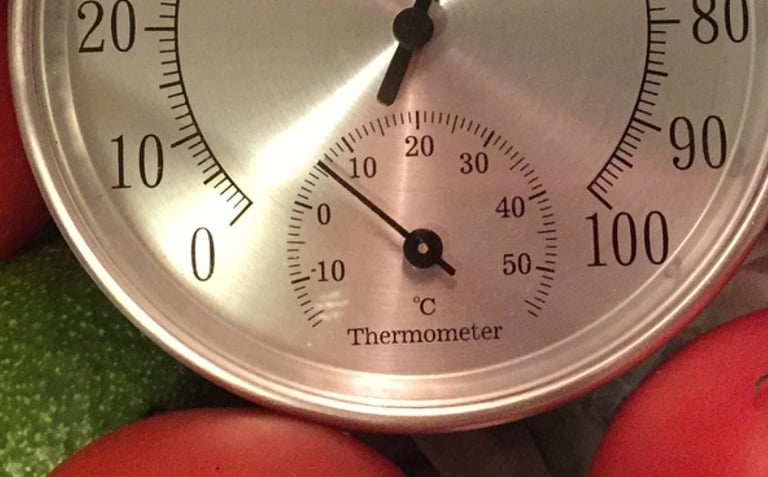

Analyzing several modern refrigerators revealed that none of them could consistently reach the recommended RH levels of 85-95%. This is because current systems are passive; they simply trap the moisture that the produce itself releases. This method is highly inefficient, as it forces the food to dehydrate itself to humidify the environment, leading to a significant loss of weight, quality, and nutritional value. Furthermore, every time the drawer is opened, this trapped humidity escapes, restarting the dehydration cycle.
Refrigerator RH (Relative Humidity) Management
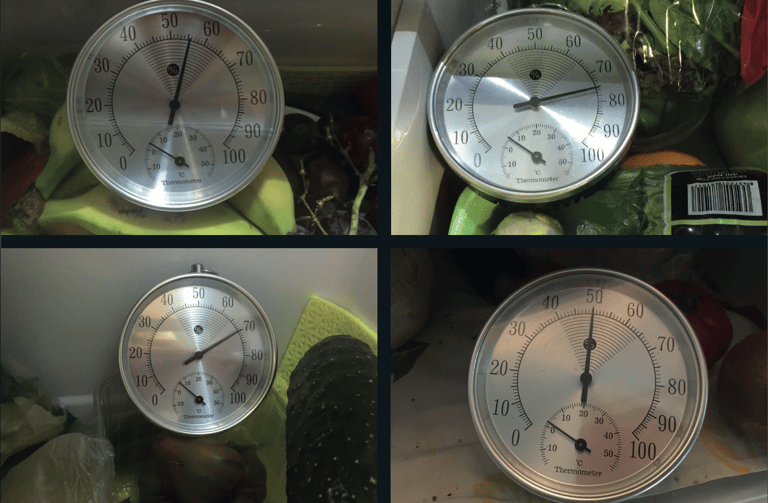

The research showed that very few refrigerators integrate ethylene filters (at the time, specific systems were found from KitchenAid and Bosch). The main drawback is that these disposable filters saturate easily, quickly losing their effectiveness. Ethylene is a natural gas that dramatically accelerates ripening and spoilage in sensitive produce. Without proper ethylene management, storing different types of fruits and vegetables together becomes highly problematic and directly contributes to food waste at home.
Refrigerator Ethylene Treatment

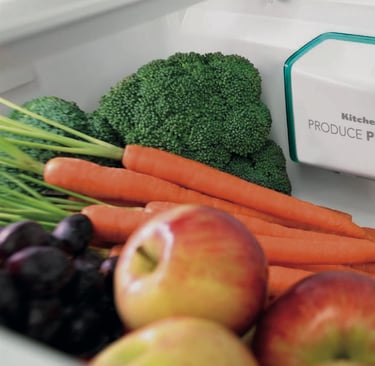
The humid environment of a crisper drawer is an ideal breeding ground for bacteria and mold. Treating these microorganisms and potential pesticides is therefore crucial for food safety and longevity. Despite this, the investigation found only one major brand, Whirlpool, that integrated this functionality at the time of research, using features like multi-ions cloud and UV light technology. This widespread lack of active antimicrobial systems is a significant flaw that compromises food preservation.
Refrigerator Bacteria Treatment
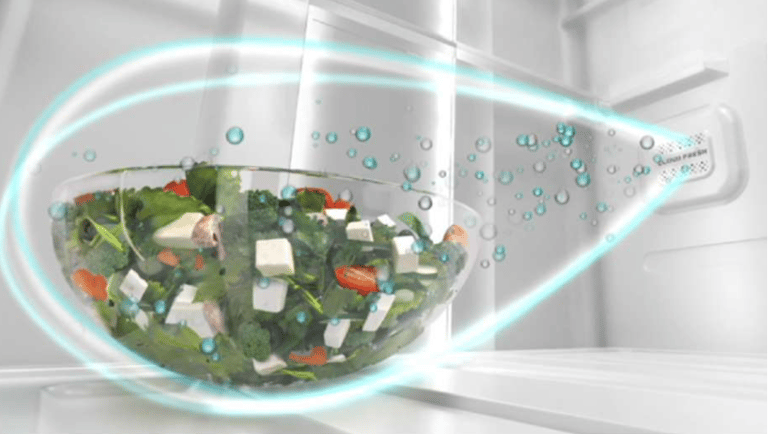

A significant issue is the confusing message from manufacturers themselves. While crisper drawers are specifically designed for produce, the brands' own advertisements frequently show these same fruits and vegetables stored on regular shelves. This contradictory marketing undermines the feature's purpose and teaches consumers that proper storage is not important, leading to incorrect habits.
Refrigerator Manufacturers' Drawback
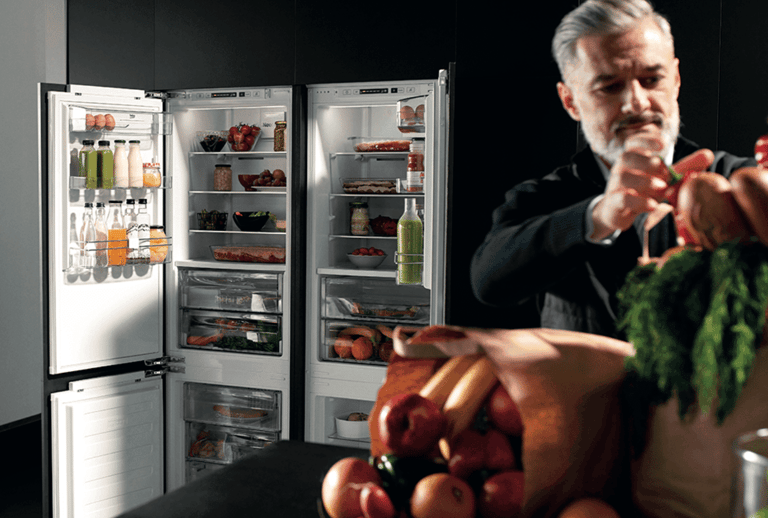

Benchmark Conclusions


These case studies reveal critical drawbacks in home preservation technology. The management of temperature, humidity, ethylene, and bacteria is largely inadequate compared to professional standards. It is clear that many aspects of the modern refrigerator can and should be improved. An upgrade is necessary to meaningfully tackle the problem of domestic food waste.

At home, fruit and vegetables are usually kept inside the refrigerator’s crisper drawers.
The Problem with Home Preservation: Analyzing the Modern Refrigerator ——
These compartments have been specifically designed to keep fruits and vegetables fresh for longer. However, a detailed analysis reveals that current refrigerator technology falls short of providing the optimal conditions recommended by food science, leading to premature spoilage and significant food waste.
Benchmark Study


Analyzing modern Samsung, Bosch, Siemens and Hisense Refrigerators
A critical flaw in all refrigerators on the market is their reliance on a single temperature setting (typically 0°C - 5°C) for preserving all fresh produce. This "one-size-fits-all" approach directly contradicts the requirements of the professional food industry and the diverse needs of the produce itself. Many fruits and vegetables, especially those from tropical or subtropical climates, require warmer storage conditions to avoid irreversible "chilling injuries". Storing them at near-freezing temperatures damages their cellular structure, shortens their shelf-life, and degrades their quality, making the standard refrigerator an unsuitable environment for a wide variety of fresh foods.
Refrigerator Temperature Management


Analyzing several modern refrigerators revealed that none of them could consistently reach the recommended RH levels of 85-95%. This is because current systems are passive; they simply trap the moisture that the produce itself releases. This method is highly inefficient, as it forces the food to dehydrate itself to humidify the environment, leading to a significant loss of weight, quality, and nutritional value. Furthermore, every time the drawer is opened, this trapped humidity escapes, restarting the dehydration cycle.
Refrigerator RH (Relative Humidity) Management


The research showed that very few refrigerators integrate ethylene filters (at the time, specific systems were found from KitchenAid and Bosch). The main drawback is that these disposable filters saturate easily, quickly losing their effectiveness. Ethylene is a natural gas that dramatically accelerates ripening and spoilage in sensitive produce. Without proper ethylene management, storing different types of fruits and vegetables together becomes highly problematic and directly contributes to food waste at home.
Refrigerator Ethylene Treatment


The humid environment of a crisper drawer is an ideal breeding ground for bacteria and mold. Treating these microorganisms and potential pesticides is therefore crucial for food safety and longevity. Despite this, the investigation found only one major brand, Whirlpool, that integrated this functionality at the time of research, using features like multi-ions cloud and UV light technology. This widespread lack of active antimicrobial systems is a significant flaw that compromises food preservation.
Refrigerator Bacteria Treatment


A significant issue is the confusing message from manufacturers themselves. While crisper drawers are specifically designed for produce, the brands' own advertisements frequently show these same fruits and vegetables stored on regular shelves. This contradictory marketing undermines the feature's purpose and teaches consumers that proper storage is not important, leading to incorrect habits.
Refrigerator Manufacturers' Drawback


Benchmark Conclusions


These case studies reveal critical drawbacks in home preservation technology. The management of temperature, humidity, ethylene, and bacteria is largely inadequate compared to professional standards. It is clear that many aspects of the modern refrigerator can and should be improved. An upgrade is necessary to meaningfully tackle the problem of domestic food waste.

Introducing SmartFresh PRO
The Solution ——
To solve the critical shortcomings of modern refrigerators, the SmartFresh PRO concept redesigns the preservation experience from the ground up. Instead of making small adjustments, this project integrates proven technologies from the professional Food Supply Chain directly into the home environment.
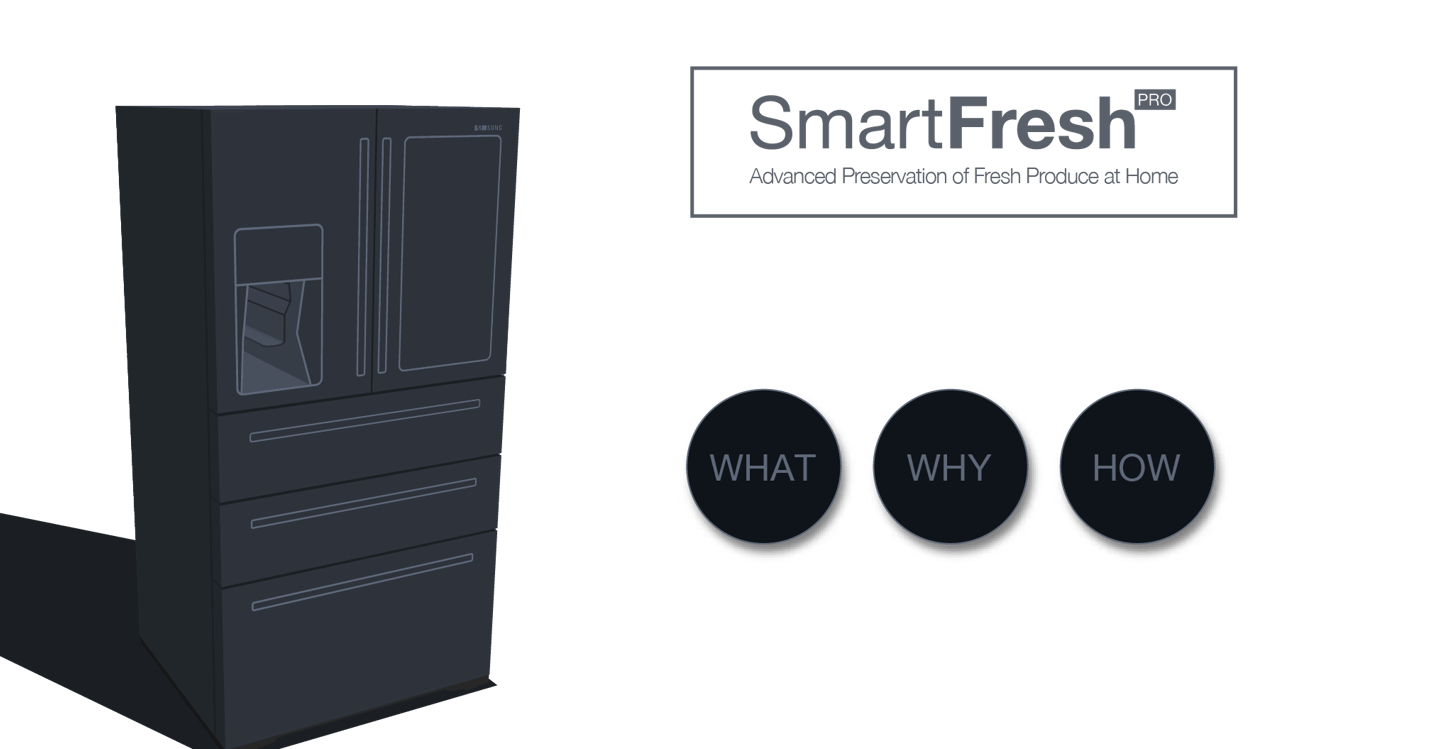

The Solution ——
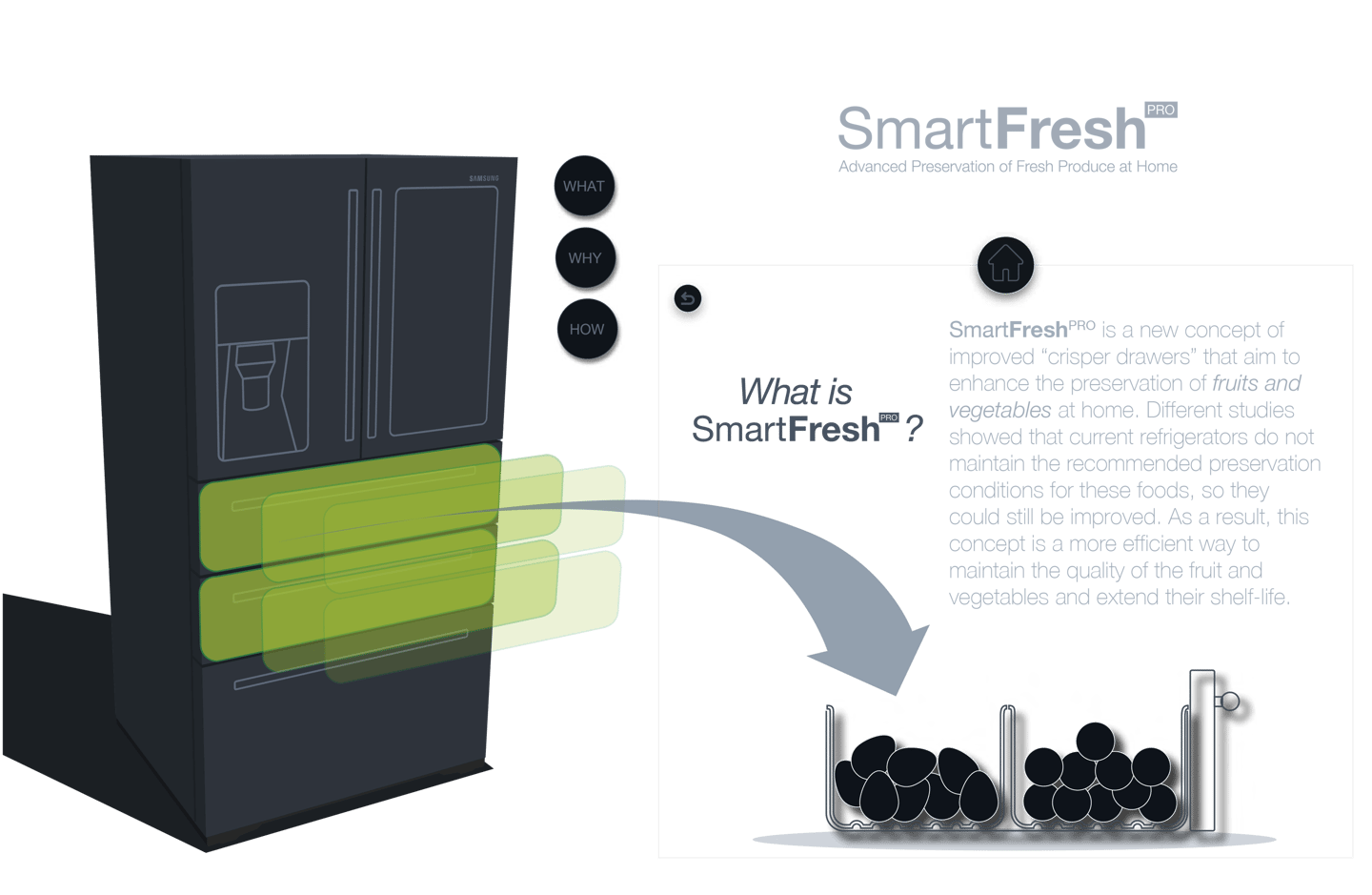

A New, Simplified Approach to Preservation
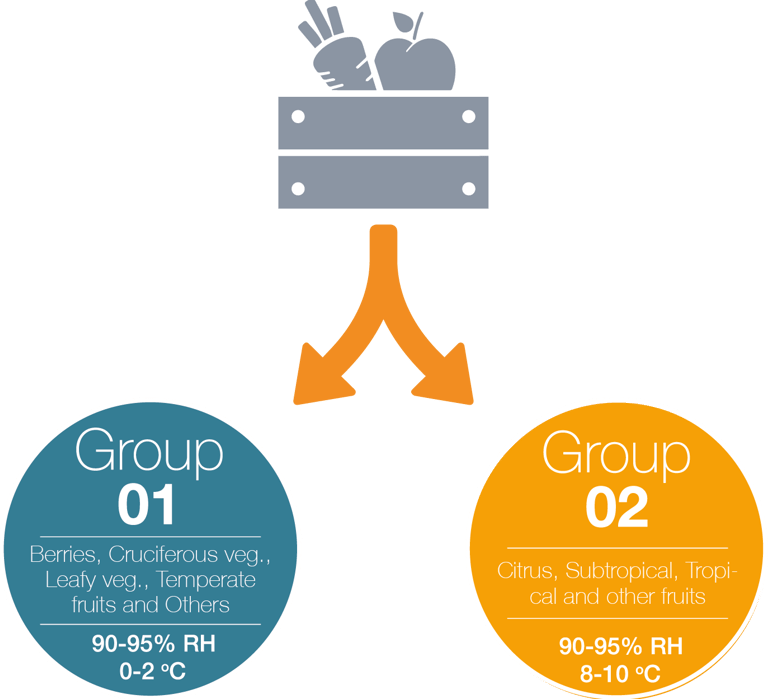

The first step was to redefine how produce is grouped for storage at home. SmartFresh PRO proposes a new classification system that simplifies preservation by focusing on the most critical factor: temperature.
Group 01 (0-2°C): For temperate fruits, berries, and most vegetables that thrive in cold conditions. This includes produce like apples, berries, broccoli, carrots, and leafy greens.
Group 02 (8-10°C): For citrus, subtropical, and tropical fruits that are damaged by cold and require warmer storage to prevent "chilling injuries". This group includes tomatoes, bananas, cucumbers, and peppers.
This science-based, two-drawer system makes proper storage intuitive and effective for everyone.
Advanced Features for Optimal Freshness
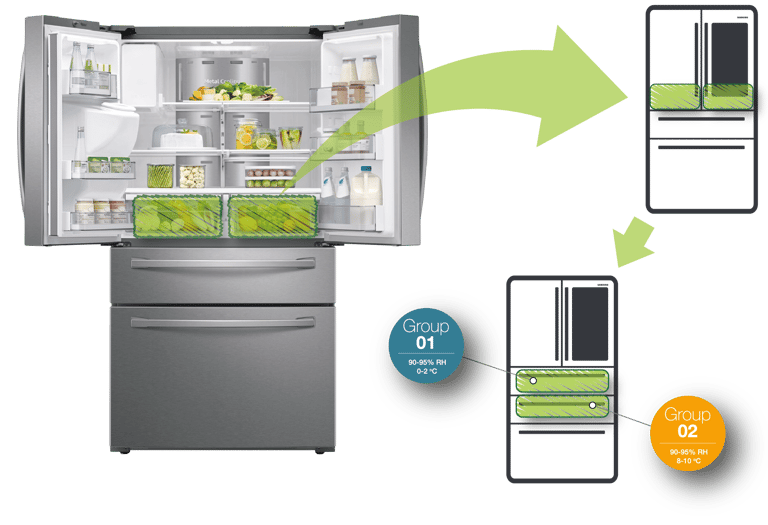

To bring this concept to life, the Samsung Family Hub™ refrigerator was used as a design reference. This allowed the project to focus on what truly matters: redesigning the drawers to be larger, smarter, and equipped with the following technologies.
Advanced Temperature Management & Active Humidity Control

Smart Fresh PRO implements three separate cooling systems that provide precise and stable temperature control in each compartment (0-2°C, 8-10°C, and -18°C for the freezer). Multiple sensors constantly monitor and minimize temperature fluctuations.
Unlike current refrigerators, SmartFresh PRO uses an external, active humidification system. Based on ultrasonic technology, it generates a fine, cold steam that allows the drawers to reach and maintain optimal humidity levels of up to 95% RH. This active approach stops produce from dehydrating, preserving its freshness, texture, and nutritional value.
Ethylene & Bacteria Treatment

Ethylene Treatment: To neutralize the ripening effect of ethylene gas, each drawer integrates a Vacuum Ultraviolet (VUV) Photolysis system. This technology is highly effective and safely oxidizes excess ethylene gas. Ethylene sensors monitor concentrations and activate the system automatically when needed.
Bacteria Treatment: To disinfect produce, the system incorporates UV-C light, a technology trusted by the food industry. This is a safe and chemical-free method for killing most bacteria and pesticides on the surface of fruits and vegetables, ensuring they are not only fresher but also safer to eat
The Solution: Introducing SmartFresh PRO ——




To solve the critical shortcomings of modern refrigerators, the SmartFresh PRO concept redesigns the preservation experience from the ground up. Instead of making small adjustments, this project integrates proven technologies from the professional Food Supply Chain directly into the home environment. The result is a system that actively manages the conditions necessary to keep fruits and vegetables fresh up to 3 times longer, dramatically reducing food waste and saving money.
The Solution ——
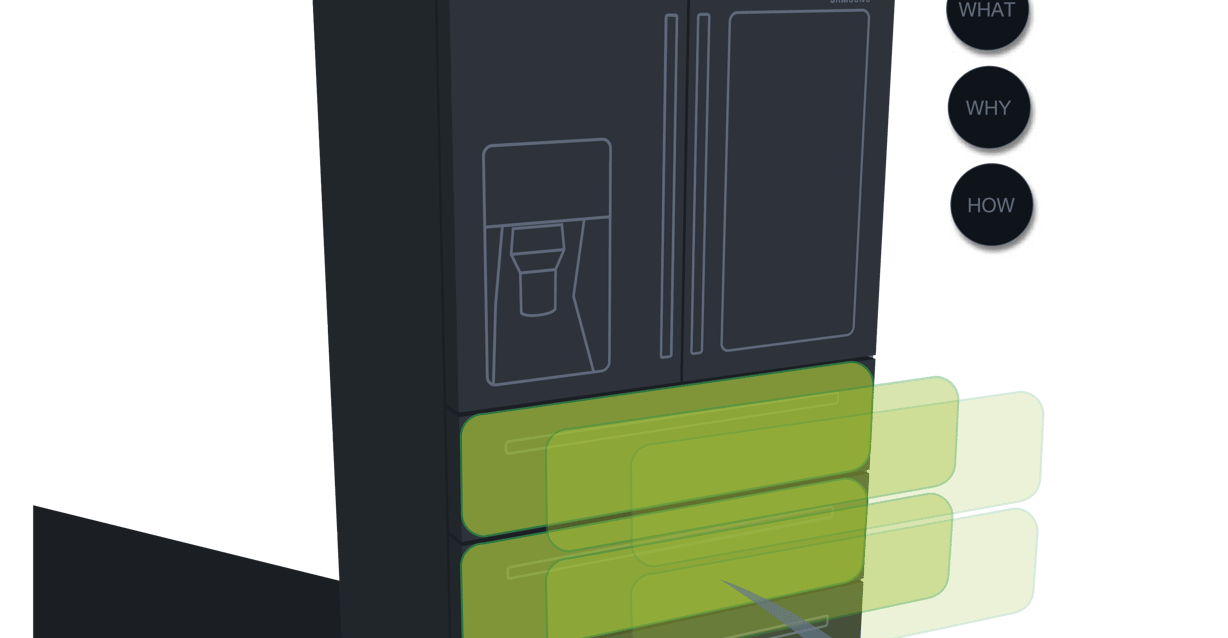

A New, Simplified Approach to Preservation


The first step was to redefine how produce is grouped for storage at home. SmartFresh PRO proposes a new classification system that simplifies preservation by focusing on the most critical factor: temperature.
Group 01 (0-2°C): For temperate fruits, berries, and most vegetables that thrive in cold conditions. This includes produce like apples, berries, broccoli, carrots, and leafy greens.
Group 02 (8-10°C): For citrus, subtropical, and tropical fruits that are damaged by cold and require warmer storage to prevent "chilling injuries". This group includes tomatoes, bananas, cucumbers, and peppers.
This science-based, two-drawer system makes proper storage intuitive and effective for everyone.
Advanced Features for Optimal Freshness

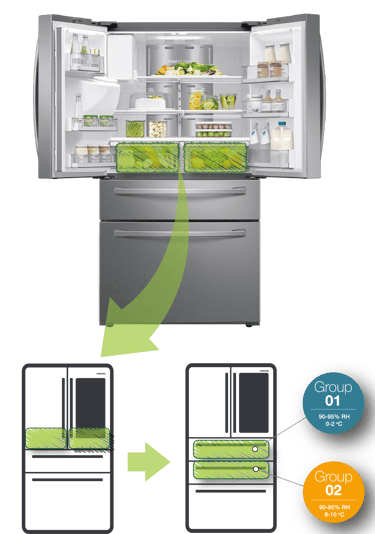
To bring this concept to life, the Samsung Family Hub™ refrigerator was used as a design reference. This allowed the project to focus on what truly matters: redesigning the drawers to be larger, smarter, and equipped with the following technologies.
Advanced Temperature Management & Active Humidity Control


SmartFresh PRO implements three separate cooling systems that provide precise and stable temperature control in each compartment (0-2°C, 8-10°C, and -18°C for the freezer). Multiple sensors constantly monitor and minimize temperature fluctuations.
Unlike current refrigerators, SmartFresh PRO uses an external, active humidification system. Based on ultrasonic technology, it generates a fine, cold steam that allows the drawers to reach and maintain optimal humidity levels of up to 95% RH. This active approach stops produce from dehydrating, preserving its freshness, texture, and nutritional value.


Ethylene & Bacteria Treatment


Ethylene Treatment: To neutralize the ripening effect of ethylene gas, each drawer integrates a Vacuum Ultraviolet (VUV) Photolysis system. This technology is highly effective and safely oxidizes excess ethylene gas. Ethylene sensors monitor concentrations and activate the system automatically when needed.
Bacteria Treatment: To disinfect produce, the system incorporates UV-C light, a technology trusted by the food industry. This is a safe and chemical-free method for killing most bacteria and pesticides on the surface of fruits and vegetables, ensuring they are not only fresher but also safer to eat


The Product: Design & Engineering ——
The Smart Fresh PRO system is not just a concept; it's a fully engineered solution designed for seamless integration into the modern kitchen. This section details the final product design, showcasing the key components and how they work together to create the optimal environment for fresh produce.


The SmartFresh PRO: New Crisper Drawers

The final design consists of two fully insulated drawers, each equipped with an array of sensors and advanced systems to actively manage its internal atmosphere.

Key components include:
Insulated Drawer Body: This is crucial for maintaining a stable internal temperature and the high relative humidity needed for preservation.
Integrated Sensors: Hygrometer and ethylene sensors are built into the front of the drawer to continuously monitor the atmosphere, providing real-time data to the central control system.
Excess Water Draining System: A specially designed, sloped floor channels condensation away from the produce. This prevents food from sitting in water, which would otherwise promote bacterial growth.
Modular Inner Baskets: These keep produce organized and allow for optimal airflow and drainage, ensuring food does not come into direct contact with the drawer's base.
Inside the Drawer: A Closer Look


The interior of each compartment is where the preservation technology comes into direct contact with the food.
Dedicated Inlets and Outlets: Each drawer integrates multiple inlets and outlets on its sides for the humidification and ethylene removal systems.
Precise Cooling: A central inlet introduces cool air to maintain the exact temperature required for that specific food group.
UV-C Sanitation: UV-C lamps are strategically placed at the top of the drawer, casting a sanitizing light over the produce to effectively kill surface bacteria and pesticides.
Continuous Monitoring: By constantly tracking these conditions, the system ensures your produce is stored in its ideal environment day after day, extending its life and preserving its quality.
The Product: Design & Engineering ——
The Smart Fresh PRO system is not just a concept; it's a fully engineered solution designed for seamless integration into the modern kitchen. This section details the final product design, showcasing the key components and how they work together to create the optimal environment for fresh produce.
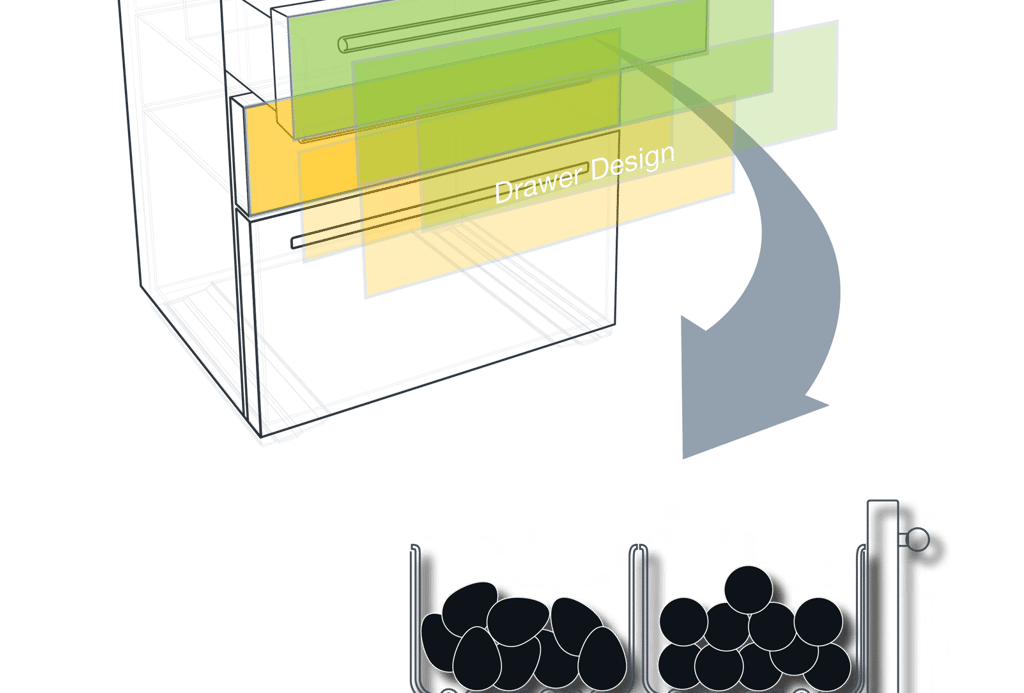

The SmartFresh PRO: New Crisper Drawers


The final design consists of two fully insulated drawers, each equipped with an array of sensors and advanced systems to actively manage its internal atmosphere.


Key components include:
Insulated Drawer Body: This is crucial for maintaining a stable internal temperature and the high relative humidity needed for preservation.
Integrated Sensors: Hygrometer and ethylene sensors are built into the front of the drawer to continuously monitor the atmosphere, providing real-time data to the central control system.
Excess Water Draining System: A specially designed, sloped floor channels condensation away from the produce. This prevents food from sitting in water, which would otherwise promote bacterial growth.
Modular Inner Baskets: These keep produce organized and allow for optimal airflow and drainage, ensuring food does not come into direct contact with the drawer's base.
Inside the Drawer: A Closer Look




The interior of each compartment is where the preservation technology comes into direct contact with the food.
Dedicated Inlets and Outlets: Each drawer integrates multiple inlets and outlets on its sides for the humidification and ethylene removal systems.
Precise Cooling: A central inlet introduces cool air to maintain the exact temperature required for that specific food group.
UV-C Sanitation: UV-C lamps are strategically placed at the top of the drawer, casting a sanitizing light over the produce to effectively kill surface bacteria and pesticides.
Continuous Monitoring: By constantly tracking these conditions, the system ensures your produce is stored in its ideal environment day after day, extending its life and preserving its quality.
Product Gallery: A Design Showcase ——
Smart Fresh PRO is an advanced preservation system designed for domestic use. Its design focuses on improving food quality, significantly extending its shelf-life, and reducing waste at home by guiding the user toward proper produce preservation.


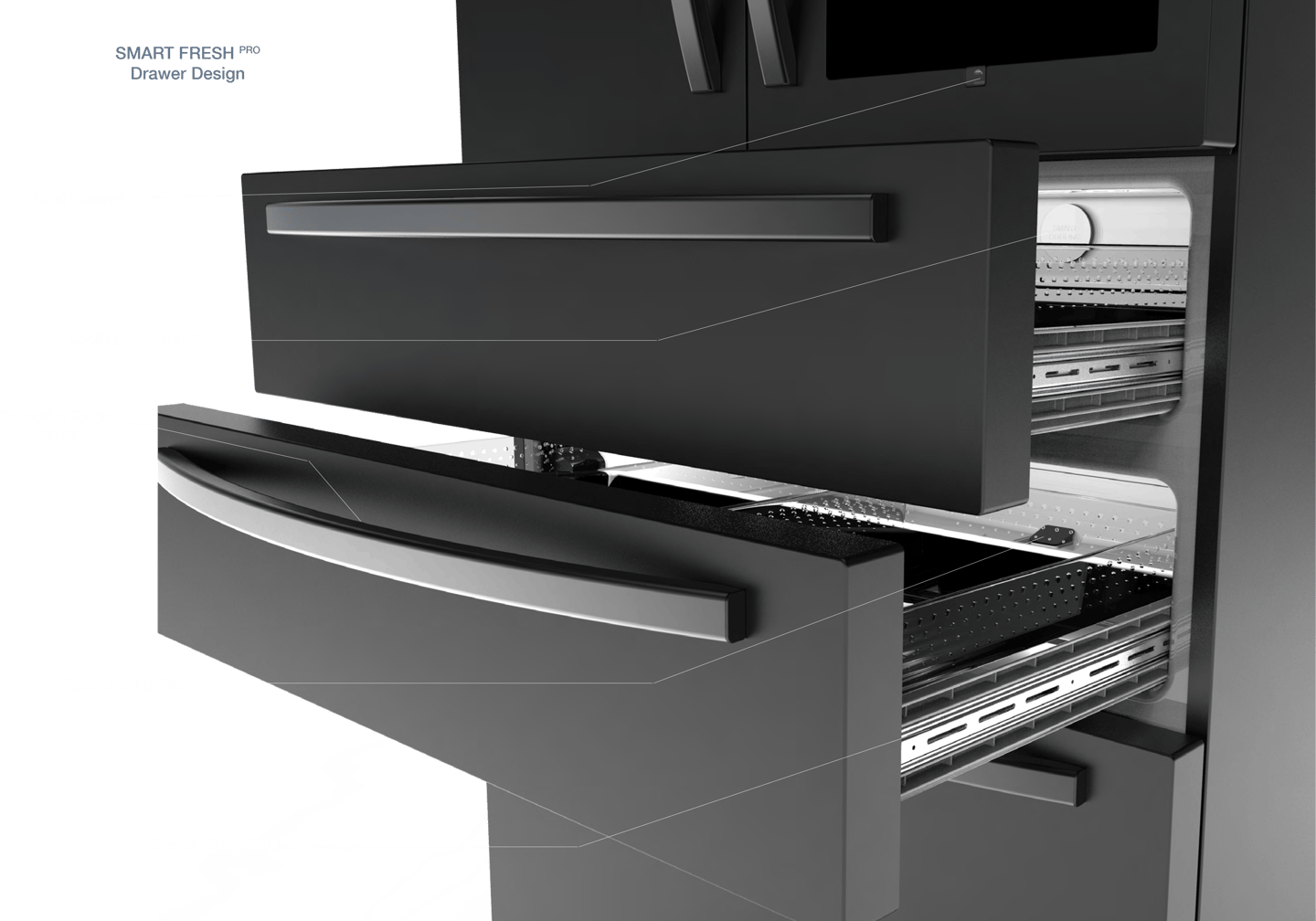

Engineering & Components (Exploded View)
Every component is engineered with a purpose. The drawer's insulated body maintains a stable temperature and humidity, while a specialized water draining system prevents condensation buildup. Inside, modular containers allow for organized storage and ensure optimal airflow.
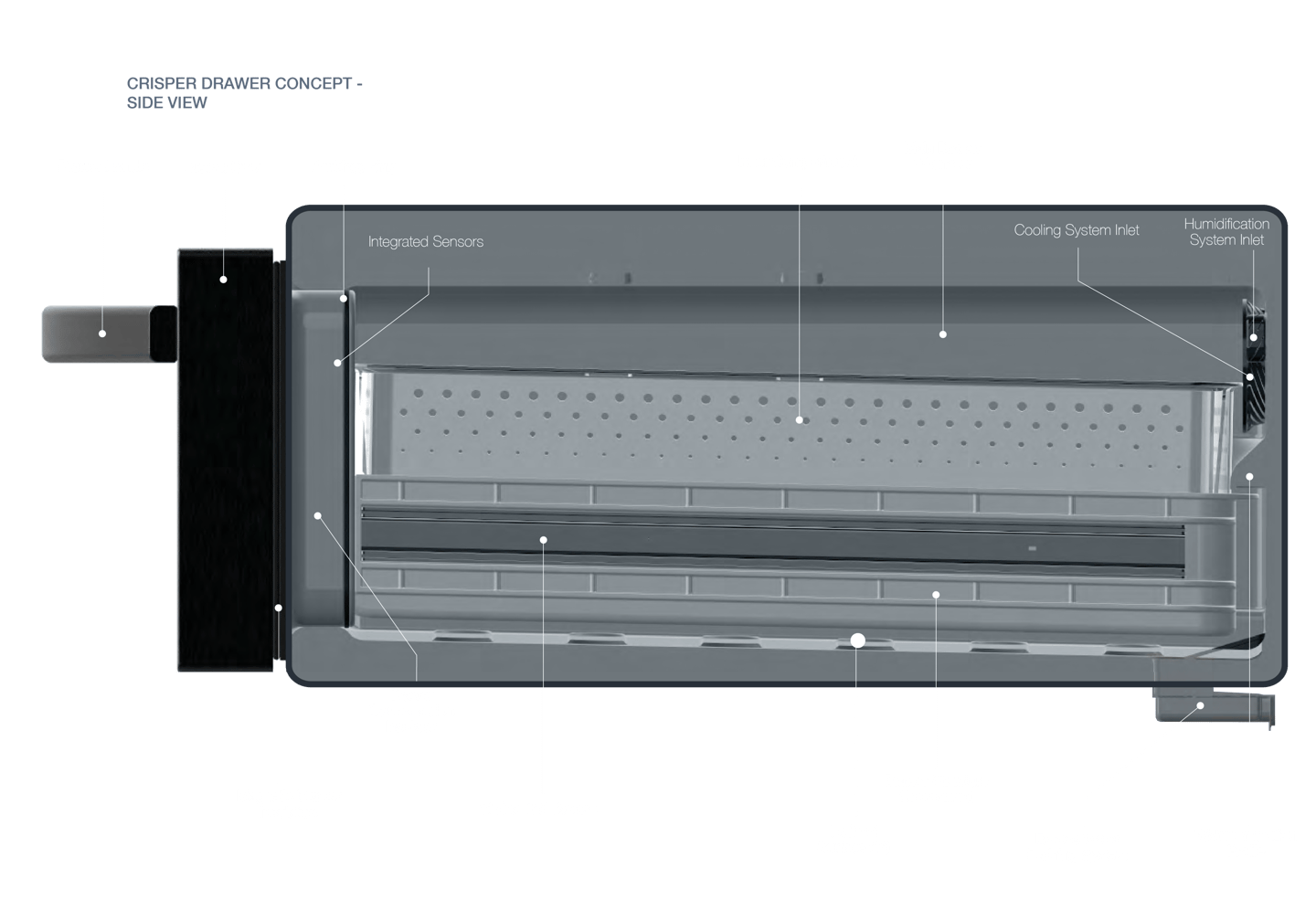

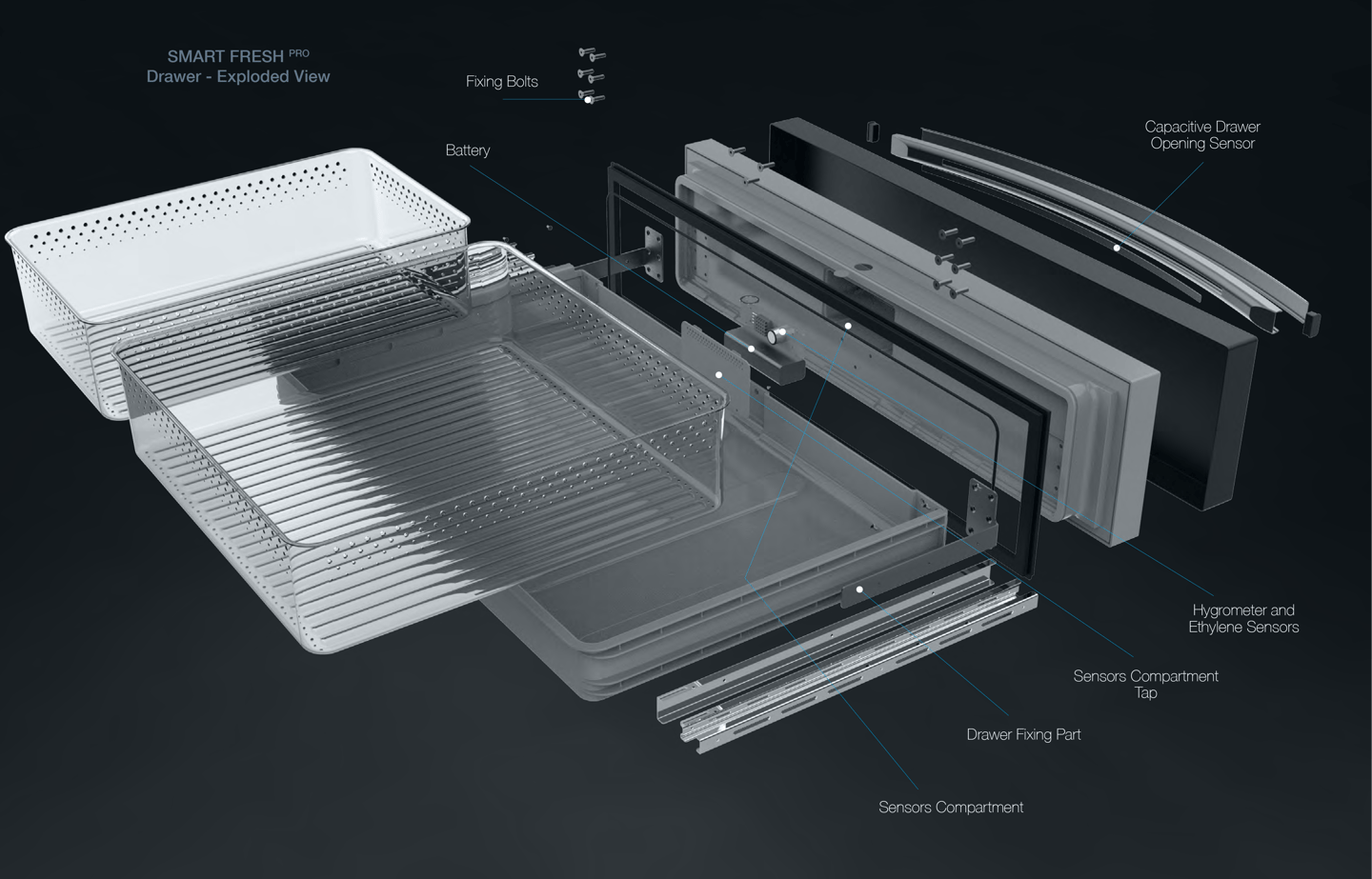

The Technological Core (Back View)
The back view reveals the technological core of the system. This is where the VUV Ethylene Removing System, the ultrasonic humidification system, and the independent cooling circuits are integrated, making advanced preservation possible.


Product Gallery: A Design Showcase ——
Smart Fresh PRO is an advanced preservation system designed for domestic use. Its design focuses on improving food quality, significantly extending its shelf-life, and reducing waste at home by guiding the user toward proper produce preservation.
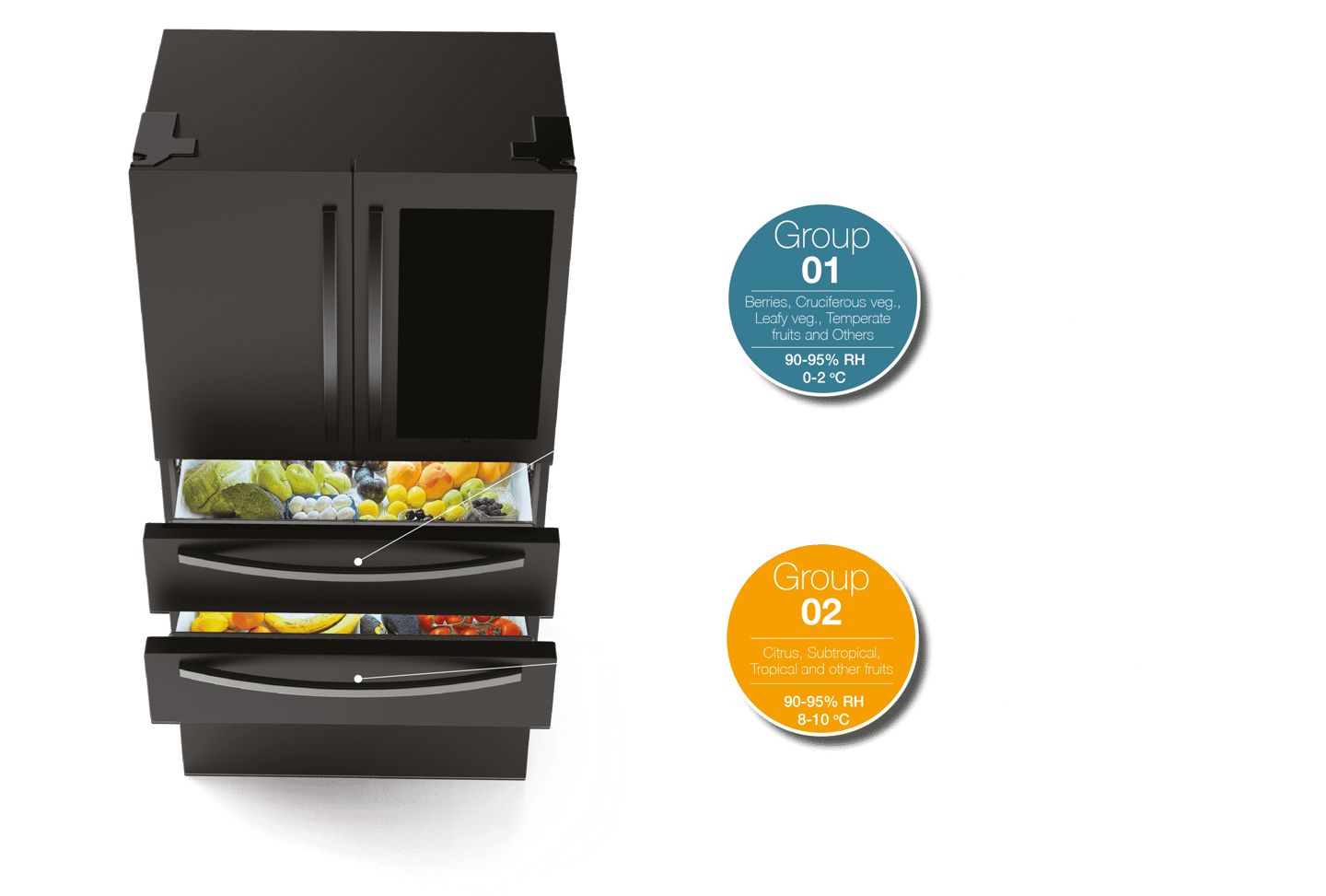



Engineering & Components (Exploded View)
Every component is engineered with a purpose. The drawer's insulated body maintains a stable temperature and humidity, while a specialized water draining system prevents condensation buildup. Inside, modular containers allow for organized storage and ensure optimal airflow.




The Technological Core (Back View)
The back view reveals the technological core of the system. This is where the VUV Ethylene Removing System, the ultrasonic humidification system, and the independent cooling circuits are integrated, making advanced preservation possible.

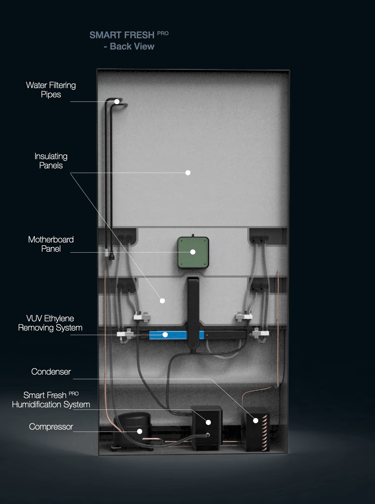


An Intelligent Guide: The Smart Fresh PRO UI/UX Experience——
To bridge the gap between the Smart Fresh PRO's advanced preservation technology and effortless daily use, the system leverages the large, interactive touchscreen of the Samsung Family Hub.
This screen is transformed into an intelligent guide, designed to eliminate guesswork and empower the user with the knowledge to preserve their food correctly. The goal is to simplify the entire process—from identifying a new grocery item to knowing exactly where to store it—ensuring the user can take full advantage of the refrigerator's capabilities to reduce food waste.
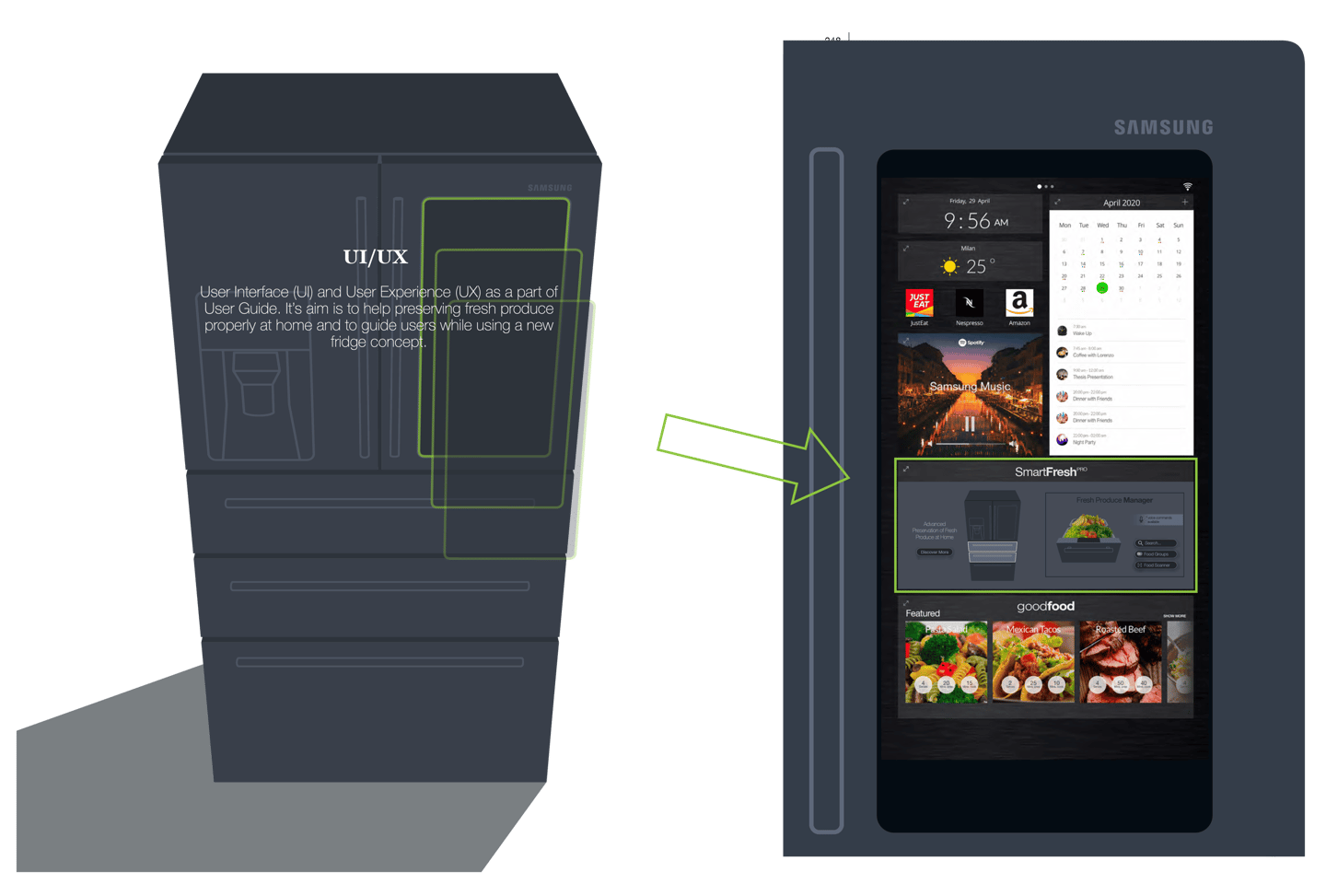

The SmartFresh PRO Storage Guide
Technology meets simplicity through the user interface. This visual storage guide, integrated into the refrigerator's touchscreen, clearly displays the two main food groups, telling the user exactly where to store each product to maximize its freshness and durability.
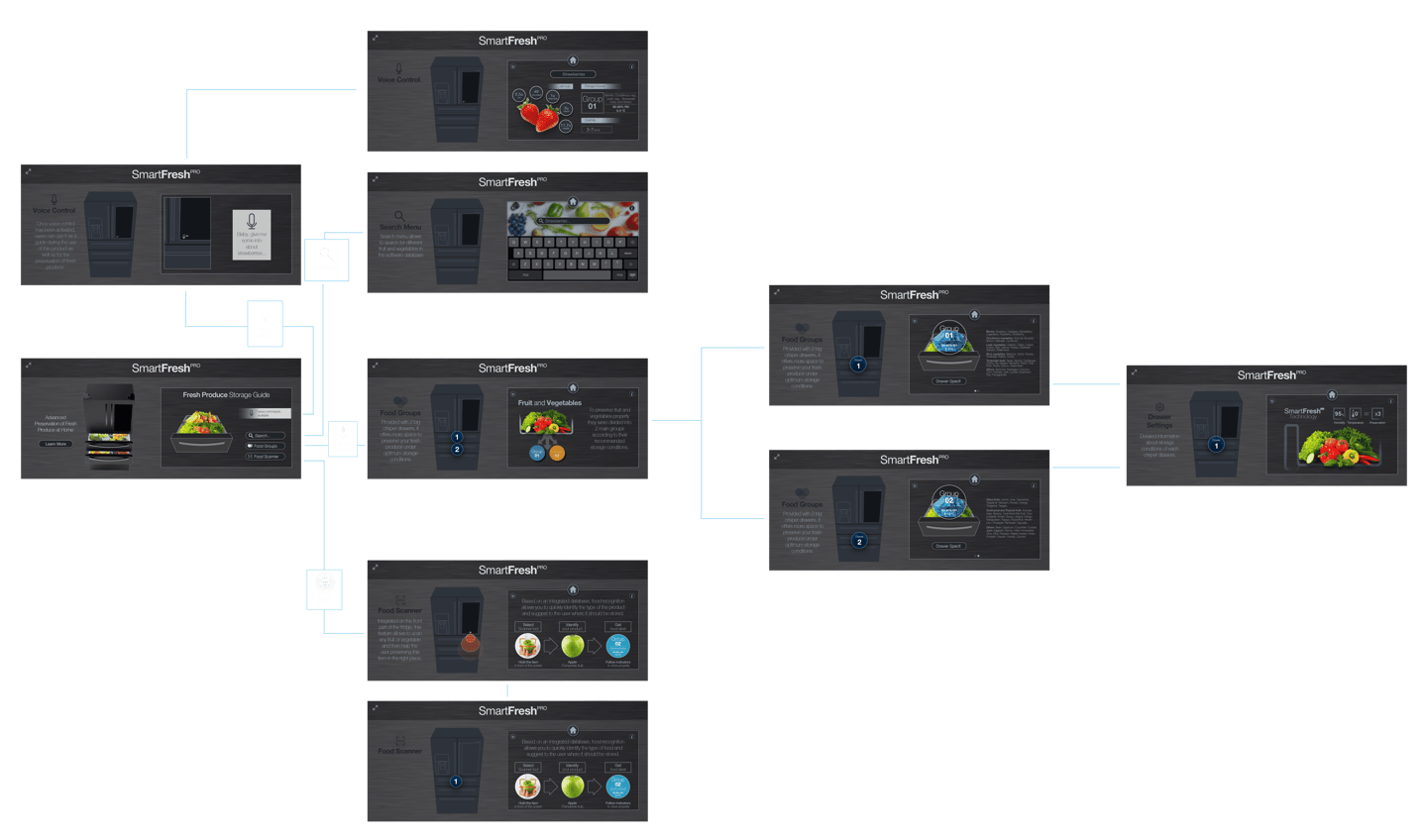

To make daily use effortless, the system offers several ways to get information:
Food Scanner: An integrated scanner located just below the screen can instantly identify any fruit or vegetable. It then displays key nutritional information and visually indicates the correct drawer for storage.
Search Menu: A quick and simple search menu allows users to manually look up any product in the extensive database.
Voice Control: For a complete hands-free experience, the system integrates voice commands. Users can simply ask, "Hey Bixby, where do I store strawberries?", and receive guidance instantly.


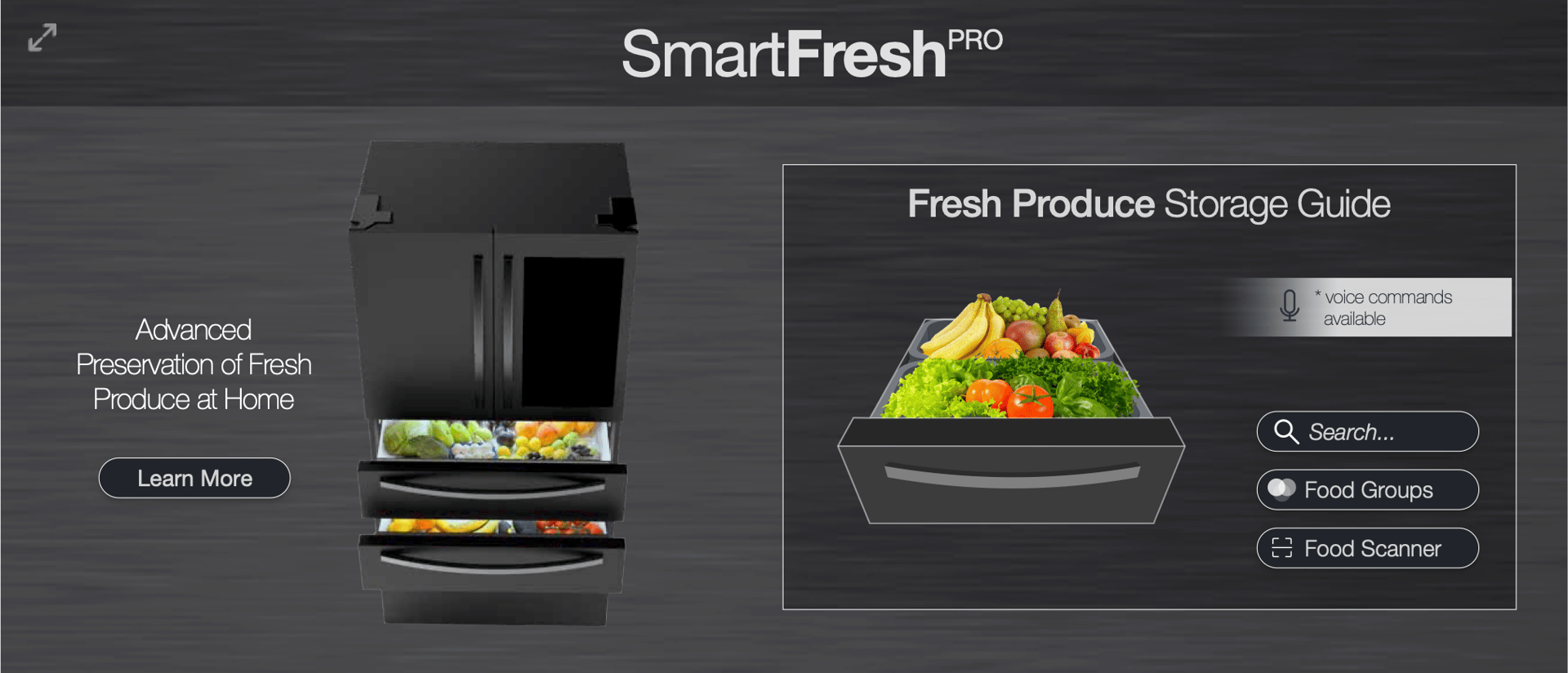

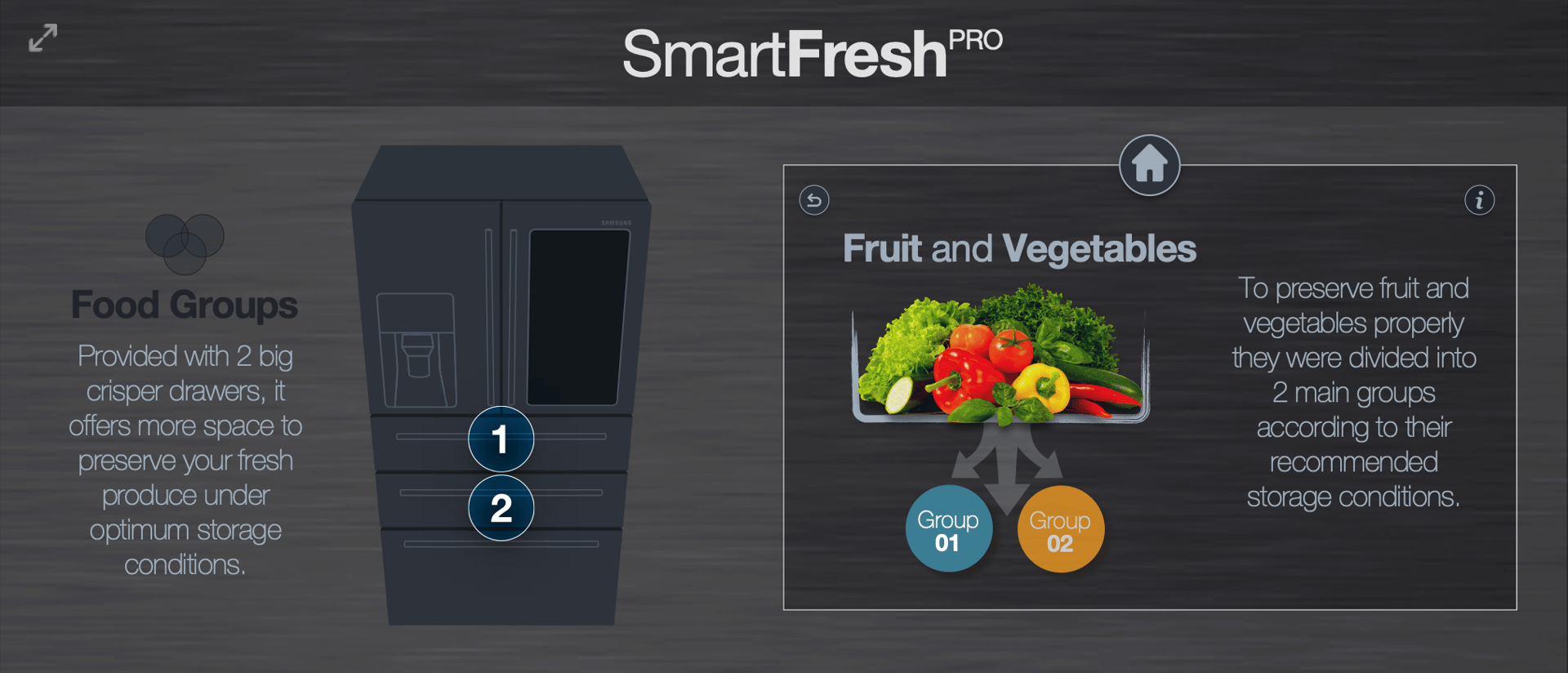
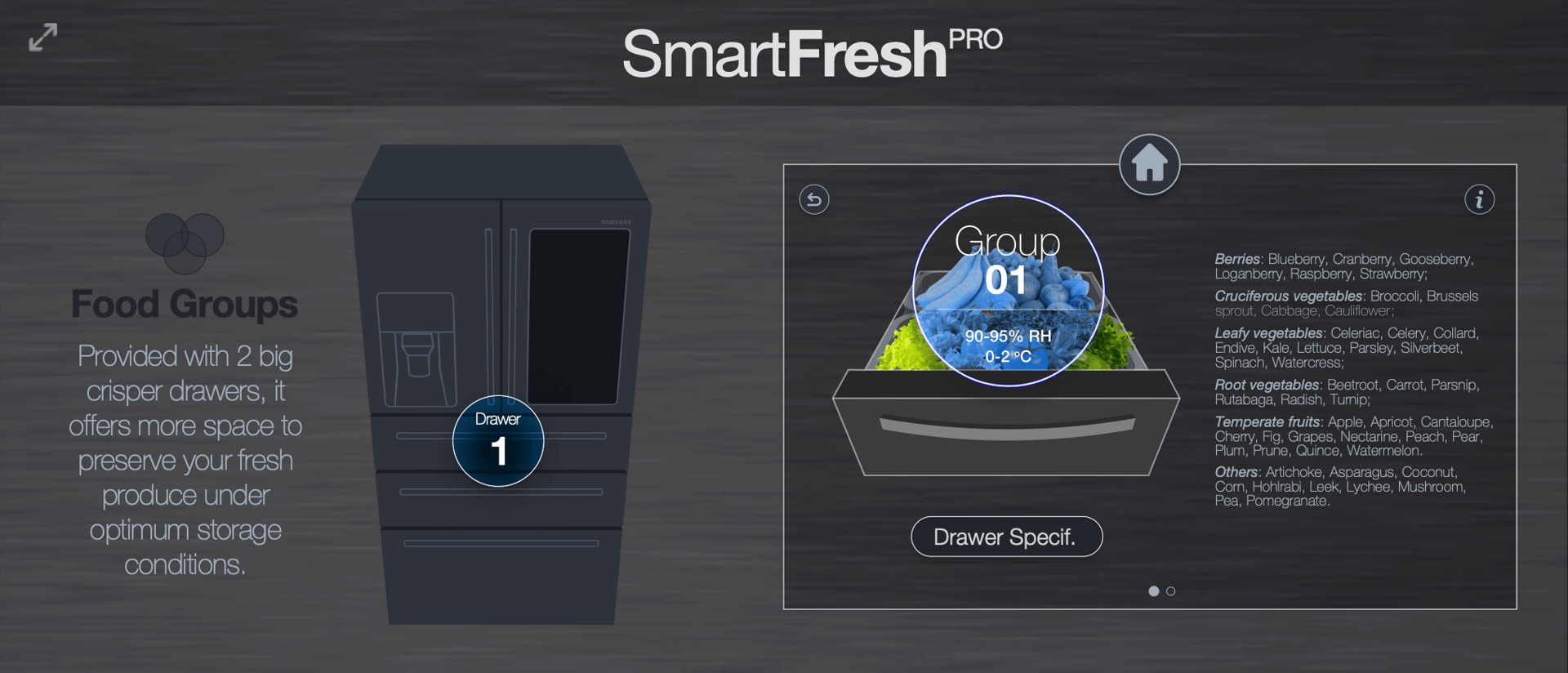

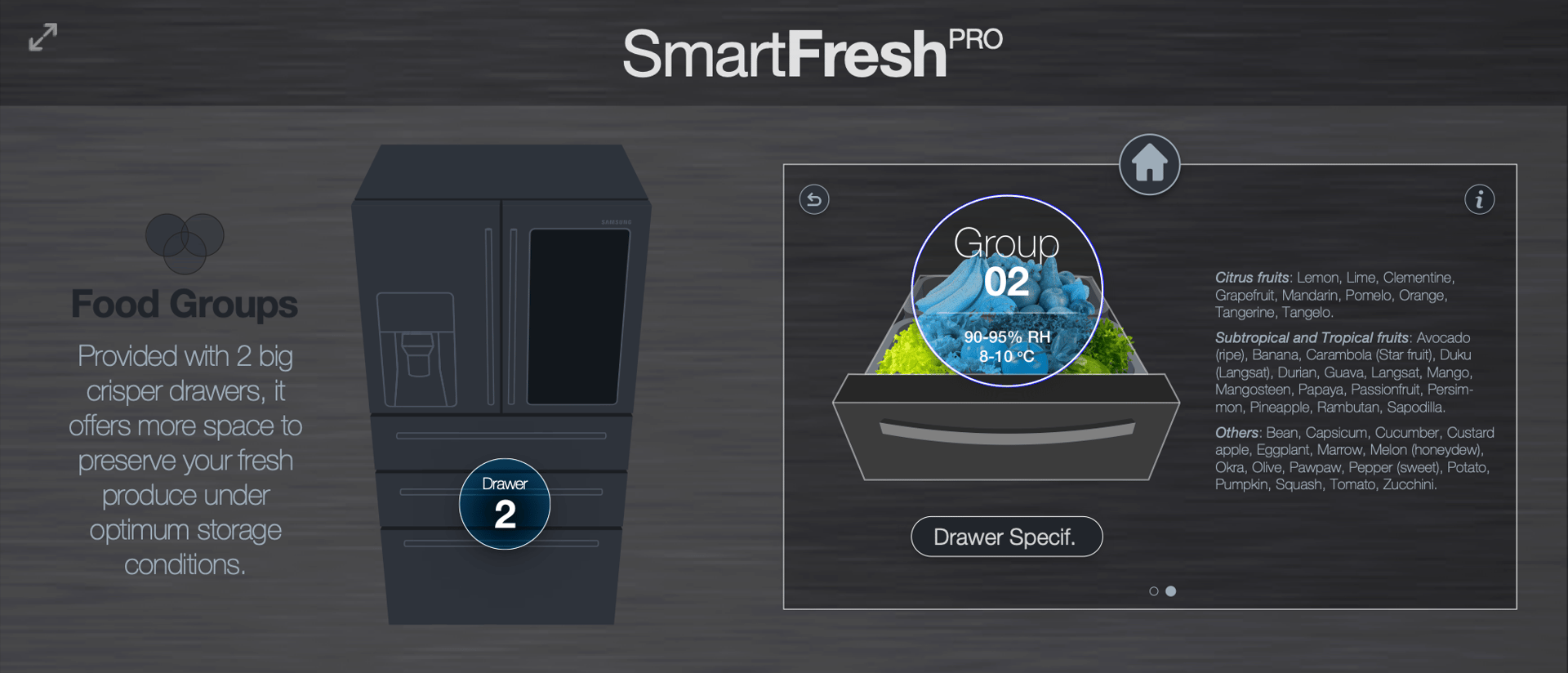
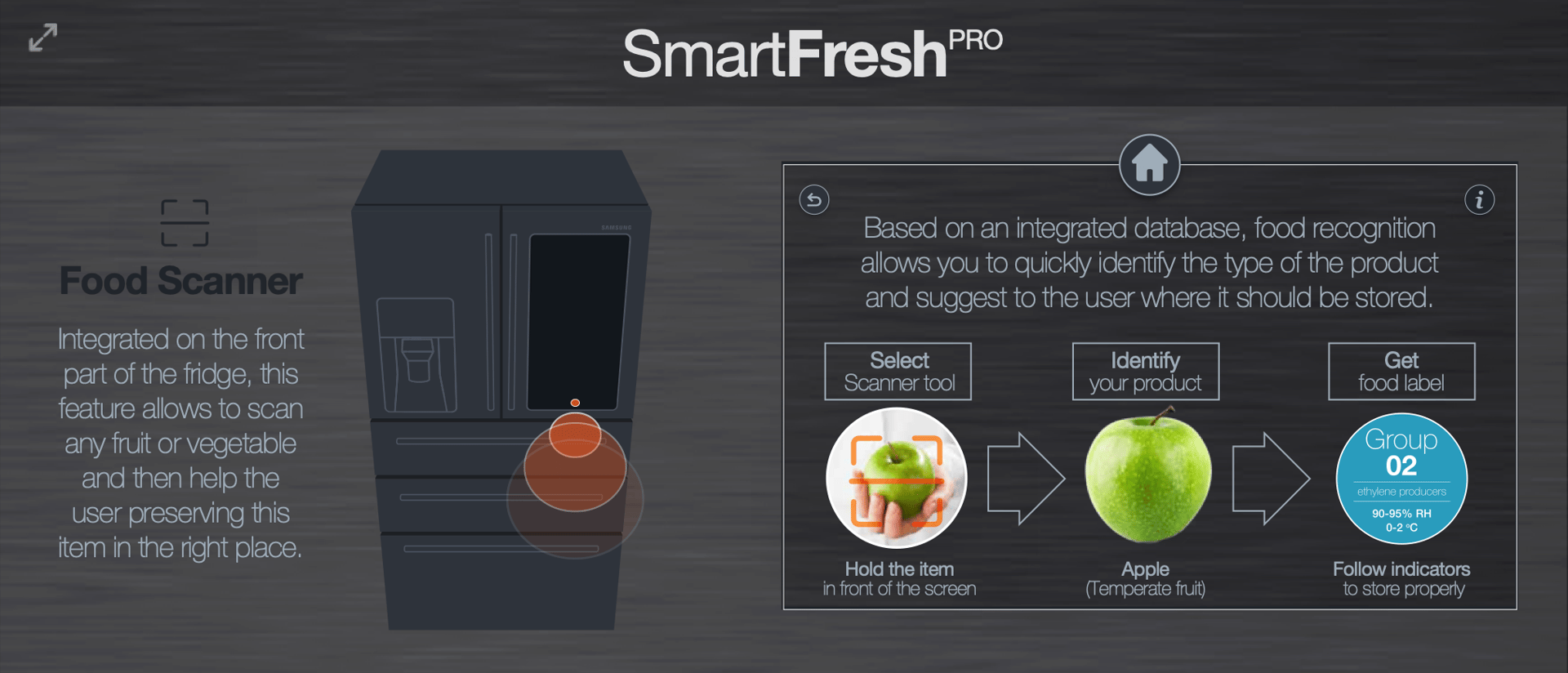

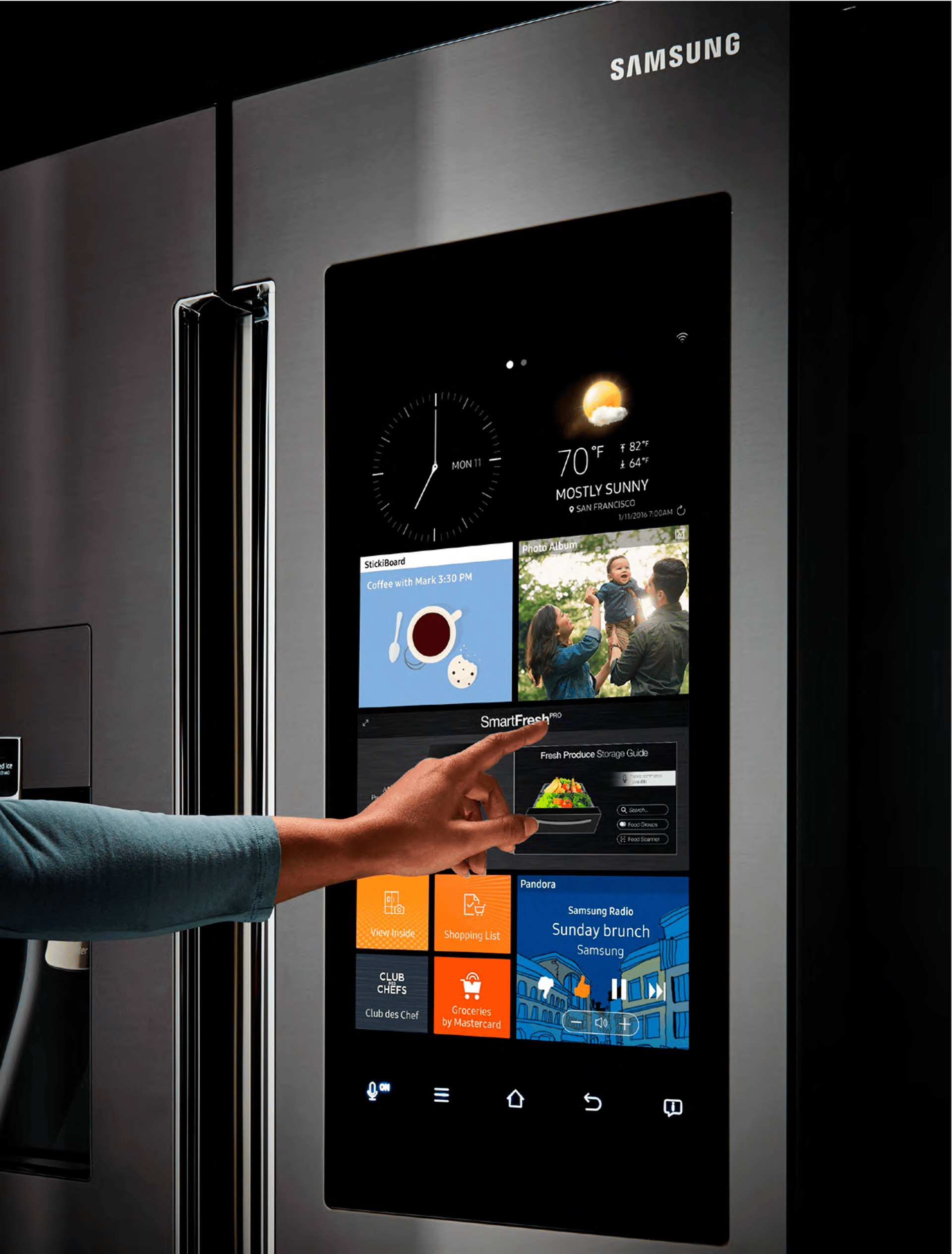
An Intelligent Guide: The Smart Fresh PRO UI/UX Experience——
To bridge the gap between the Smart Fresh PRO's advanced preservation technology and effortless daily use, the system leverages the large, interactive touchscreen of the Samsung Family Hub.
This screen is transformed into an intelligent guide, designed to eliminate guesswork and empower the user with the knowledge to preserve their food correctly. The goal is to simplify the entire process—from identifying a new grocery item to knowing exactly where to store it—ensuring the user can take full advantage of the refrigerator's capabilities to reduce food waste.


The SmartFresh PRO Storage Guide
Technology meets simplicity through the user interface. This visual storage guide, integrated into the refrigerator's touchscreen, clearly displays the two main food groups, telling the user exactly where to store each product to maximize its freshness and durability.


To make daily use effortless, the system offers several ways to get information:
Food Scanner: An integrated scanner located just below the screen can instantly identify any fruit or vegetable. It then displays key nutritional information and visually indicates the correct drawer for storage.
Search Menu: A quick and simple search menu allows users to manually look up any product in the extensive database.
Voice Control: For a complete hands-free experience, the system integrates voice commands. Users can simply ask, "Hey Bixby, where do I store strawberries?", and receive guidance instantly.













Smart Fresh Pro
Click here to purchase a complete digital version at a discounted price
English version
(330 pages)
Advanced Preservation of Fresh Produce at Home


Smart Fresh Pro
Click here to purchase a complete digital version at a discounted price
English version
(330 pages)
Advanced Preservation of Fresh Produce at Home
Copyright © 2025. Vasyl Pavlyuchok. All Rights Reserved.
